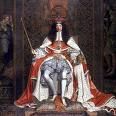











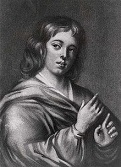


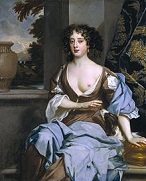
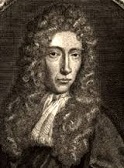


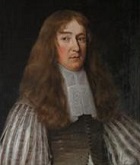

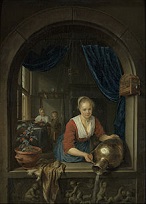
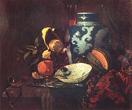

1660 Pop. of the Am. colonies: 75K. Don't peep, but this decade is being recorded? On Jan. 1 Samuel Pepys (1633-1703) makes the first entry in his Diary (ends 1669) at the age of 27; he calls English drag actor Edward "Ned" Kynaston (1640-1712) "the loveliest lady tht ever I saw in my life... only her voice not very good"; he writes in a secret code that is not broken until 1821; later it is discovered that he was simply using a shorthand described in Tachygraphy by Thomas Shelton (1601-50) (the real author of "Don Quixote"?), a copy of which resided in his library at Magdalene all along. On Feb. 13 Swedish king (since 1654) Charles X Gustav (b. 1622) dies, and after ex-king Christina returns and tries to make a comeback, then gives up and returns to Rome, his only son Charles (Karl) XI (1655-97) becomes Wittelsbach king #3 of Sweden (until 1697). The Bible-Thumping Puritan Era of England ends, and the Anglican Restoration Era begins? On Feb. 21 the Protectorate being kaput, George Monck recalls the Presbyterian members who had been expelled in Pride's Purge of 1648, and the restored Long/Rump Parliament of 1640-9 issues writs for a new free Parliament and votes its own dissolution on Mar. 16; on Apr. 25 the Royalist Convention Parliament (not properly summoned by royal writs) assembles, and immediately invites large and healthy (unlike his daddy) Charles II to occupy the throne; Irish-born British diplomat Sir George Downing (1623-84) keeps his job by sucking up to Charles II, telling him that he gave up "principles sucked in" while living in New England, gaining him a knighthood in May, plus a piece of land adjoining St. James's Park, which he later turns into Downing St.; on May 8 after receiving Charles II's Declaration of Breda, it unanimously declares that Charles II (d. 1685) has been the lawful king of England, Scotland, and Ireland since the execution of his father in Jan. 1649; constitutional govt. and repub. govt. have now both been tried in England and rejected, making England safe for the royals again? On May 19 English diarist Samuel Pepys visits Loodsdiunen, Holland near The Hague to visit Countess Margaret of Henneberg and her 365 children? On May 29 Royal Oak Day (his birthday) Charles II (1630-85) returns to London wearing a tall Louis XIV-style wig picked up in France; on June 18 after appointing former bishop of London (1633-49) William Juxon (1582-1663) as archbishop of Canterbury (who takes office on Sept. 20 until June 4, 1663), he is crowned (restored) in a fancy shindig in Westminster Abbey (until Feb. 6, 1685) (Britain's 46th monarch), making a point of wearing his daddy's coronation duds; on June 19 a Day of Public Thanksgiving on Restoration of Charles is held; Charles II agrees to respect the Magna Charta and Petition of Rights; after his humiliation at the hands of Scottish Covenanters he vows to never set foot there while imposing his will on it, which is to restore the Episcopalian church; since his mommy was a Catholic, he never quite gets over its spell; Richard Cromwell flees abroad (until 1680), while Charles orders his daddy Oliver Cromwell's body exhumed, hanged, and decapitated to get even for what he did to his daddy, and the head stuck on a pole at the end of Westminster Hall, where it remains for at least 24 years; Edward Hyde (1609-74) is created Baron Hyde of Hindon and appointed chancellor of the exchequer, but resigns to become speaker of the House of Lords, then next year is created Viscount Cornbury and 1st Earl of Clarendon, becoming the virtual head of the English govt. during the Restoration (until 1667), seeking to legitimize it with Parliamentary action to make it a reflection of the people's will; Dublin again becomes a stronghold of Roman Catholicism; side-switcher David Leslie is freed from the Tower, and next year created Baron Newark with a pension; double side-switcher George Monck (1608-79) is created 1st duke of Albemarle. On May 3 after Count Rakoczy and new field marshal Count Raimondo of Montecucculi (Montecuccoli) (1609-80) defeat Frederick William the Great Elector of Brandenburg, the Peace of Oliva (near Gdansk) ends the war between Austria, Poland, Sweden, and Brandenburg, and recognizes the Great Elector's sovereignty in East Prussia; on May 27 the Treaty of Copenhagen ends the war between Sweden and Denmark, making the Danish crown hereditary, and recovers Funen and Bornholm for Denmark and Trondelag for Norway; Montecucculi's star begins zooming; meanwhile Polish-Lithuanian king (1648-68) John II Casimir Vasa (Jan II Kazmierz Wasa) (1609-72) is freed to concentrate on the invading Russians, and on June 29 defeats a Russian invasion of the Ukraine at the Battle of Polonka, followed by a push on Oct. 7-8 at the Battle of Slobodyshche (Slobodyszcze), followed on Oct. 27 by the Treaty of Slobodyshche (Slobodyszcze), abolishing the 1654 Pereiaslav Articles and reestablishing formal ties between Poland and Ukraine, followed by a decisive Polish V on Oct. 14-Nov. 2 at the Battle of Chudniv (Cudnow); too bad, the big V bankrupts the Poles, preventing them from going on the attack. On May 15 dead regicides John Bradshaw, Oliver Cromwell, Henry Ireton, and Thomas Pride are served with a bill of attainder backdated to Jan. 1, 1649, and on Dec. 4 both houses of Parliament engross it, with the following resolution: "That the Carcases of Oliver Cromwell, Henry Ireton, John Bradshaw, and Thomas Pride, whether buried in Westminster Abbey, or elsewhere, be, with all Expedition, taken up, and drawn upon a Hurdle to Tiburne, and there hanged up in their Coffins for some time; and after that buried under the said Gallows: And that James Norfolke Esquire, Serjeant at Arms attending the House of Commons, do take care that this Order be put in effectual Execution." On June 1 Puritan-turned-Quaker missionary Mary Barrett Dyer (b. 1611) is burned at the stake in Boston, Mass. by the Puritan authorities after banishing her 3x and seeing her return; meanwhile they relax Sabbath laws to allow men to carry guns on the way to church to defend from Indian attacks. On June 3 after ditching his bookish beautiful lover niece Marie Mancini, and she utters the soundbyte "You love me, you are the king and I go", Louis XIV marries his cousin (daughter of Philip IV of Spain, brother of his mother Queen Anne, who had not seen each other for 40 years) Marie (Maria) Theresa (the Infanta) at Saint-Jean-de-Luz; each morning, if the queen sits up and claps her hands after the curtains are parted, the servants know that the king has performed his royal duty that night? Call 1-800-law-help today? On June 4 despite opposition by rehabilitated Algernon Percy, 10th earl of Northumberland, the Proclamation for Apprehending the Late King's Judges causes the arrest of the Regicides of Charles I, incl. pres. of the court John Bradshaw (1602-59), Sir Henry Marten (1602-80), Thomas Harrison (b. 1606) (leader of the Fifth Monarchists, the first to be found guilty, after which he is hanged, drawn, and quartered on Sat. Oct. 13 in Charing Cross) and Sir Hardress Waller (1604-66) (cousin of royalist side-switcher Sir William Waller, which is lucky for him?), many of them hanged, drawn, and quartered, some pardoned, and 19 getting life sentences, the ones who were already dead at the restoration (John Bradshaw, Oliver Cromwell, Henry Ireton, Thomas Pride, Richard Deane) having their bodies disinterred and hanged; smart ones flee England, incl. John Dixwell (1607-89), Edward Whalley (1607-75) and William Goffe (1605-79), who flee to well-named New Haven, Conn. and hole up in a cave, beat the heat and all die natural deaths, after which three intersecting major avenues are named after them; even the 16 of the 75 who didn't sign the king's death warrant are persecuted, some receiving life sentences, although none are executed; some misc. court officers also get it good, esp. solicitor-gen. John Cook(e) (b. 1608) (executed on Oct. 16). On June 23 England and Portugal sign a treaty, providing for the marriage of the infanta Catherine of Braganza to Charles II with a big dowry. On Sept. 13 Charles II's Navigation Act of 1660 continues Cromwell's mercantilist policy in spades, making England the sole outlet for "enumerated" goods not produced there incl. tobacco, cotton, and sugar, and requiring crews to be three-quarters English. On Dec. 25 after the 1647 edict prohibiting the celebration of Christmas in England is revoked, England becomes merry again? Eleven years without a Parliament, eleven years without a king is now complete? On Dec. 29 Charles II dissolves the Convention (Long) Parliament reaching a compromise with them keeping a small standing army, with a much larger nat. militia composed of citizens to be summoned in times of need, organized by the lord lt. of each county and under civil law. Charles II makes his brother Prince James, duke of York (b. 1633) (later James II/VII) lord high adm., giving him a good income, and he turns out to be a good adm., spending the next two decades fighting the Dutch; on Sept. 3 with Charles' consent he secretly marries 8-mo. pregnant Anne Hyde (1637-71), daughter of Edward Hyde, 1st earl of Clarendon; when she has a son in Oct., rumors fly, causing James to publicly declare the marriage in Dec. after his mother Henrietta Maria tries to have it declared invalid, then leaves for France in disgust; the son dies next year, but they go on to have future English queens Mary II (b. 1662) and Anne (b. 1665), the only children of seven to survive to adulthood (four sons and one daughter die in infancy); meanwhile sperm bank James fathers many illegitimate children by several mistresses to keep up with his libido-king brother Charles. Va. proclaims Charles II king and restores Gov. William Berkeley; the growing of tobacco is outlawed in order to preserve taxes from Virginian imports. George Rakoczy II, prince of Transylvania dies in battle against the Turks, causing Emperor Leopold I to send an army to check the Turkish advance. The Great Conde is pardoned by Louis XIV for fighting against the French at Dunkirk, and he retires to his estates at Chantilly and elswhere, where he keeps the company of Moliere, Racine, Bossuet, Nicolas Boileau-Despreaux et al. Charles I's prosecutor John Cooke is railroaded through the Old Bailey then his john cooked, er, is brutally executed by Charles II's govt. and his personal effects trashed, but not before he gives an eloquent defense at his trial and a speech at the gallows. Now that a Catholic is back on the throne, mentally deficient bachelor Thomas Howard, 5th Duke of Norfolk (1627-77), grandson of art collector Thomas Howard, 2nd Earl of Arundel and Surrey (1585-1646) becomes the 5th duke of Norfolk after the 1572 attainder of his grandfather's grandfather Thomas Howard, 4th duke of Norfolk in 1572 is finally reversed; in 1677 his brother Henry Howard (1628-84) becomes the 6th duke of Norfolk. Former Barbados gov. Francis Willoughby is given joint proprietorship of Suriname along with Lawrence Hyde. Pass quietly away? After decades of trying to make the English illegal immigrants go away with magic, Mass. Indian chief-sachem Passaconaway finally gives up, and tells his people: "I was as much an enemy to the English at their first coming into these parts, as anyone whateoever, and did try all ways and means possible to have destroyed them.. but I could in no way effect it... therefore I advise you never to contend with the English, nor make war with them"; this year or next Pokanoket chief Wasmutta appears before the court of Plymouth and requests, now that his daddy Massasoit has died, that his name be changed to an English Christian one, along with his younger brother Metacomet (1639-76); they receive the names Alexander and Philip of Pokanoket. Jean Baptiste Gaston, duke of Orleans dies without a male heir, and Louis XIV gives the title to his brother Philippe (Philip) I, Duke of Orleans (1640-1701), grandfather of Philippe Egalite and great-grandfather of Louis-Philippe. John Earle, who has been with Charles II since his prince days in 1641 is appointed dean of Westminster, followed by bishop of Salisbury in 1663. New cock of the rock Charles II brings the coat and vest to England from France. North Carolina (N.C.), named after English king guess who is settled. Boers (Dutch peasants) settle in South Africa. The Royal African Co. (Co. of Royal Adventurers into Africa) is founded. A French trading post and Roman Catholic mission are established in Wisconsin (Wisc.) near modern-day Ashland by Pierre Esprit Radisson and his brother-in-law Sieur de Groseilliers. Chinese Gen. Koxinga (1624-62) ousts the Dutch from Formosa (Taiwan), and establishes an independent kingdom. After the Christian-run city council of Hagenau in Alsace refuses the small Jewish pop. a rabbi, but clever Lowel hires Rabbi Meyer as his bookkeeper to get around their regs., and the latter goes on to gain recognition as a judge in Jewish civil affairs and build a synagogue in 1665, beginning a long line of rabbis continuing to modern times, when the Jewish pop. reaches 700. In this decade black African slaves become cheaper to import to North Am. than white indentured servants, who are also considered more rebellious, and black slavery becomes hereditary in Va. and elsewhere, although blacks are viewed as lazy "salvages" who are apt to revert to cannibalism and whose women are all hos if not watched and "kept down"? - did you show them your sales receipt? In this decade brothers Nicolas Mariage and Pierre Mariage are sent by the French East India Co. to Madagascar, Persia, and India, after which Nicolas is sent by Louis XIV to sign a trade agreement with the shah of Persia to buy tea; in 1843 their descendants open a wholesale tea shop in Paris. The English Restoration puts Charles II on the English throne, after which he issues letters patent to his former page boy Thomas Killigrew (1612-83) and poet-playwright Sir William Davenant (D'Avenant) (1606-68), giving them a monopoly right to form two London theatre companies for "serious" drama; in 1662 the letters patent are reissued with women allowed to perform as actresses, replacing boys, with Margaret "Peg" Hughes (Hewes) (1630-85) becoming the first English prof. stage actress, debuting on Dec. 8 as Desdemona in "Othello" (played by Clare Market); in 1661 Davenant establishes the Duke of York's Players (Duke's Co.) (named after Prince James, Duke of York) in Lisle's Tennis Court in Lincoln's Inn Fields in 1661, moving to Dorset Garden in 1671, and closing in 1705 after becoming the first London theatre with moveable scenery, performing his own works plus those of William Shakespeare, Ben Jonson, and John Fletcher, causing people to believe he's really Shakespeare's son. ; on Aug. 21 Killigrew establishes the King's Company, which debuts at the new Theatre Royale in Drury Lane in 1663, until it is taken over by the Duke's Co. in 1682 and merge as the United Co.; the 1843 Theatres Act ends the monopoly of the patent theatres; Restoration Comedy (AKA comedy of manners) (ends 1710) in England is characterized by sexual explicitness, personally encouraged by horndog Charles II. Louis XIV helps Moliere found a theater in Paris; meanwhile Pierre Corneille begins a downhill slide as a playwright. The town of Natick, Mass. near Boston establishes the first Christian church for Amerindians - no shirt no shoes no loincloth, no service? The Scots Guards, 3rd regiment of the British Guards Div. (after Grenadiers and Coldstreams, and ahead of Welsh Guards) is formed; they wear buttons in threes, and have no plume. The Stuart restoration brings back the custom of celebrating St. Valentine's Day; it has died out in Italy and Germany, and survives only in England and France; Valentine cards don't become a custom until the mid 18th cent. The Restoration Period of Decorative Arts (ends 1689) sees a reaction to Cromwell's austerity with delicately-carved walnut furniture with barley-sugar turning, lacquer, gilding, marquetry, glued joints, cane-seated chairs, glass-fronted bookcases, and day-beds. The Restoration Period of Plays (ends 1714) sees a return to artificiality, heartlessness, licentiousness, and polished wit. In this decade Andrew Eliot migrates from East Coker, Somerset, England to Boston, Mass., producing generations of prominent Am. intellectuals incl. T.S. Eliot and Samuel Eliot Morison. In the last two-thirds of the cent. hair styles for French (hence all European and English) women go simple, not growing elaborate again until the middle of the next cent. - after all, the men paid all that money to look like peacocks and don't want feminine competition? Architecture: The Church of Sant'Ivo della Sapienza is designed by Francesco Borromini. Potsdam Palace begins construction as the hunting residence of elector Frederick William of Brandenburg (finished 1682). Sports; In this decade the game of Pall Mall (Ital. "pall maglia" = ball mallet) (father of croquet) comes to England from France, giving its name to streets in London and other places; Samuel Pepys views his first game on Apr. 2, 1661 in St. James's Park, London; it dies out by the next cent., then waits until 1850 for croquet to give it new life. Inventions: The first cuckoo clocks are made in Furtwangen in Germany's Black Forest, based on the English invention of the pendulum. The first checkbooks appear. Iaack B. Fubine of Savoy, The Hague patents a macaroni-making machine. Christiaan Huygens and the Abbe d'Hautefeuille independently invent the spiral hairspring for clocks and watches, improving accuracy. The first pencil factory is founded in Nuremberg by Friedrich Staedtler; on Oct. 3, 1835 his descendant J.S. Staedter founds Staedtler Mars & Co. in 1835. Irish-born British scientist Robert Boyle (1627-91) pub. a description of a pneumatic pump that improves on Otto von Guericke's. Water closets arrive in France from England. Nonfiction: Anon., Klencke Atlas; (1.75m x 9m); presented as a gift to Charles II of England on his restoration by a group of Dutch merchants led by Dutch sugar merchant Johannes Klencke (1620-72) in the hopes of obtaining favorable trade agreements, ending up in the British Museum and becoming the world's largest atlas (until Millennium House's "Earth Platinum" in 2013. Robert Boyle (1627-91), New Experiments Physicomechanical, Touching the Spring of the Air (1st ed.). Thieleman J. van Braght (1625-64), Martyrs Mirror of the Defenseless Christians. Sir Winston Churchill (1620-88), Divi Britannica, Being a Remark Upon the Lives of All the Kings of This Isle, from the Year of the World 2855 until the Year of Grace 1660; history of the kings of England, by an ancestor of PM Sir Winston Churchill (1874-1965). Thomas Fuller (1608-61), A Panegyrick to His Majesty on His Happy Return; gets him appointed chaplain in extraordinary to Charles II. James Harrington, Political Discourses. James Howell (1594-1666), Lexicon Tetragloton; not four but six languages (English, French, Italian, Spanish, Portuguese, Latin). Antoine de Laloubere (1600-64) and Arnaldum Colomerium, Veterum Geometrica promota in septem de Cycloide Libris et in duobus adjectis Apprendicibus (Toulouse); first mathematical work on the properties of the helix. Gaspar Schott (1608-66), Pantometricum Kircherianum (Wurtzburg). Daniel Sennert, Thirteen Books of Natural Philosophy (London); "We must first speak a little concerning contact or mutual touching, Action, passion and Reaction". Robert Sharrock (1630-84), The History of the Propagation and Improvement of Vegetables. Baruch (Benedict) de Spinoza (1632-77), Short Treatise on God, Man and His Well-Being. Art: Gerrit Dou (1613-75), The Kitchen Maid with a Boy in the Window; full of sexual undertones incl. a cock hanging from the wall (Dutch "vogelen" = birding or copulation). Willem Kalf (1619-93), Still Life; captures sunlight beautifully. Adriaen van Ostade (1610-85), Cutting the Feather. Jan Steen (1626-79), Poultry Yard. Jan Vermeer (1632-75), The Cook. Emanuel de Witte (1617-92), Interior of a Church. Francisco de Zuraban, The Young Virgin. Music: Francesco Cavalli (1602-76), Serse (opera); composed for the marriage of Louis XIV; copied by Nicolo Minato and G.F. Handel. Plays: Pierre Corneille (1606-84), La Toison d'Or (The Golden Fleece) (tragedy). Moliere (1622-73), Sganarelle. Poetry: Nicolas Boileau-Despreaux (1636-1711), Satires; first of 12, taking apart contemporary writers in rhymed couplets. John Dryden (1631-1700), Astraea Redux; in praise of Charles II. Novels: Hans Jakob Christoph von Grimmelshausen (1621-76), (Simplicius Simplicissimus) Der Abenteurliche Simplicissimus Teutsch; the barbaric world of the Holy Roman Empire during the Thirty Years' War; "The account of the life of an odd vagrant named Melchior Sternfels von Fuchshaim: namely where and in what manner he came into this world, what he saw, learned, experienced, and endured therein; also why he again left it of his own free will"; #1 German picaresque novel, and #1 German prose classic of the cent. Madeleine de Scudery (1607-1701), Almahide, our l'Esclave Reine (8 vols.) (1660-3). Births: German physician (first to use ether in medicine) Friedrich Hoffmann (d. 1742) on Feb. 19 in Halle. Irish Ulster-Scot physician (inventor of milk chocolate) Sir Hans Sloane, 1st Baronet (d. 1753) on Apr. 16 in Killyleagh, County Down. Italian composer (founder of the Neapolitan school of opera) (precursor of Mozart?) Alessandro Scarlatti (d. 1725) on May 2 in Palermo, Sicily; father of Domenico Scarlatti (1685-1757); trained in Rome under Italian oratorio composer Giacomo Carissimi. English Hanoverian king #1 (1714-27) George I (d. 1727) on May 28 in Hanover, Germany; founder of the Hanoverian Dynasty in England; son elector Ernest Augustus of Hanover (1620-98) of electress Sophia of Hanover (1630-1714), daughter of Elizabeth Stuart of Hanover (1596-1662), daughter of James I of England. Spanish viceroy of New Spain (1702-11) Francisco V Fernandez de la Cueva, 10th Duke of Albuquerque (d. 1724) on Nov. 17 in Genoa, Italy. Bavarian-French Le Grande Dauphine Maria Anna Victoria of Bavaria (d. 1690) on Nov. 28 in Munich; eldest daughter of Elector Ferdinand Maria of Bavaria (1636-79) and Princess Henriette Adelaide of Saxony (1636-76); wife (1680-90) of her 2nd cousin Grand Dauphin Louis (1661-1711). English poet-painter Anne Killigrew (d. 1685) in London. African Ashanti king (1675-1717) (black) Osei Kofi Tutu I (d. 1717) in Kumasi. French "Nouveau Cuisinier" royal chef (to Philippe I and Philippe II, Dukes of Orleans) Francois Massialot (d. 1733) in Limoges. Swedish scientist-explorer Olof (Olaus) Rudbeck the Younger (d. 1740); son of Olof Rudbeck the Elder (1630-1702); knighted in 1719; teacher of Carl Linnaeus; ancestor of Alfred Nobel. Austrian Baroque composer, organist and music theorist Johann Joseph Fux (d. 1741) in Hirtenfeld, Styria. British apothecary Ambrose Godfrey (Godfrey-Hanckwitz) (d. 1741) in Nienburg, Saxony; emigrates to Britain in 1679, becoming an asst. of Robert Boyle (1627-91), learning how to make phosphorus out of urine and going into manufacturing. English celeb wife Sarah Churchill (d. 1744); wife of John Churchill, Duke of Marlborough. Deaths: French nun St. Louise de Marillac (b. 1591) on Mar. 15 in Paris. English mathematician William Oughtred (b. 1575) on June 30. Dutch poet Jacob Cats (b. 1577). French priest and charitable order founder (St.) Vincent de Paul (b. 1580) on Sept. 27 in Paris; canonized in 1737. English lord William Seymour, 2nd duke of Somerset (b. 1588); husband of dead pretender Arbella Stewart (1575-1615). Sicilian astronomer Giovanni Hodierna (b. 1597) on Apr. 6. Spanish painter Diego Velazquez (b. 1599) on Aug. 6 in Madrid. French royal Jean Baptiste Gaston, duke of Orleans (b. 1608). French man of letters Paul Scarron (b. 1610) on Oct. 6 in Paris. French natural philosopher Jacques Le Tenneur (b. 1610); leaves De Motu Naturaliter Accelerato (pub. in 1649), showing an understanding of Galileo's theory of falling objects; too bad, he also leaves Traite des Quantites Incommensurables, arguing against Descartes' use of algebra in geometry. Scottish writer-translator Sir Thomas Urquhart (b. 1611). English Quaker leader James Naylor (b. 1618) on Oct. 21 in Kings Ripton; dies after being robbed and left for dead; leaves Tracts of Naylor (pub. 1716). Dutch painter Jan Baptist Weenix (b. 1621) in Vleuten. Swedish king (1654-60) Charles X (b. 1660) on Nov. 4 in Stockholm. English princess Mary Stuart (b. 1631) on Dec. 24 in Whitehall Palace, London. English prince Henry (b. 1639) on Sept. 13.








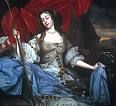



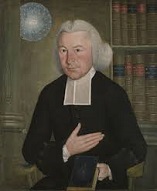
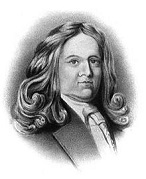
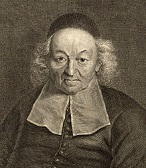




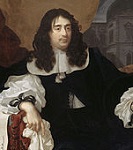
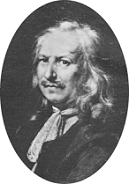
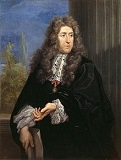





1661 Lack of any rainfall since 1659 causes a famine in India. On Feb. 5 emperor (since Oct. 8, 1643) Shun Zhi (b. 1638) dies, and his 8-y.-o. son Xuanye becomes Qing (Manchu) emperor #2 (#4) of China Qing Kang Xi (Kangxi) (1654-1723) (until 1723); his personal rule begins formally in 1667, but not in fact until 1669, and becomes the longest reign in Chinese history (62 years), marked by spectacular cultural achievement and many major scholarly enterprises, while the emperor makes six tours of his empire to observe local conditions; meanwhile Taiwan pirate leader Zheng Zhilong (b. 1604) is executed in Beijing, and his son Zheng Chenggong (1624-62) succeeds him, becoming known to Europeans as Koxinga from his Chinese title Lord of the Imperial Surname, going on to expel the Dutch from Taiwan (by 1662), becoming a curb-your-enthusiasm Chinese nat. hero. On Mar. 9 Cardinal Mazarin (b. 1602) dies, and Louis XIV (1638-1715) begins his personal rule sans first minister, introducing absolute monarchy in France, issuing the soundbyte "L'état c'est moi" (I am the state); serious persecution of the Huguenots in France begins while the king takes control of the military and concentrates high society around him at Versailles, causing the nobles to go broke trying to emulate him - I would walk 500 mi. and I would walk 500 more? On Mar. 31 Duke Philip of Orleans marries Henrietta Maria Stuart (Stewart) (1644-70), daughter of Charles I and sister of Charles II; too bad, she dies in 1670. On Apr. 18 Boston, Mass.-born Congregationalist preacher Rev. Solomon Stoddard (1643-1729) proposes the Half-Way Covenant in the Northampton Church (pastor Eleazar Mather) no longer requiring a spiritual conversion to receive communion as long as their behavior is not scandalous, thinking that it would meet the need of 2nd gen. pilgrims more interested in secular than spiritual life; in 1669 Mather dies, and Stoddard takes over; too bad, his half-way proposal fails to increase the congregations, but in 1690 he abolishes the public profession of faith, and makes the Lord's Supper a converting ordinance, causing the congregation to double from 500 to 1,000 in 20 years; in 1725 he hires his grandson Jonathan Edward as his asst., who later repudiates his views and launches the Great Awakening of 1735-45. On Apr. 23 (St. George's Day) party boy Charles II is crowned king of England, Scotland, and Ireland at Westminster Abbey, and his reign is backdated to the end of his father's; Charles II appoints former Parliamentarian Algernon Percy, 10th Earl of Northumberland, 4th Baron Percy (1602-68) (who was exiled to his estate at Petworth after he tried to prevent Charles I from being tried for treason) as lord high constable of England; known for active gonads, Charles II's mistresses incl. English actress Moll (Mary) Davies, English "Cupid" actress Nell Gwynn (1650-87), Louise Renee (Renée) de Penancoet (Penancoët) de Keroualle (Kéroualle), Duchess of Portsmouth (1649-1734), and Barbara Villiers (Palmer), 1st Duchess of Cleveland (1640-1709); he is pals with syphilitic rogue ("the Libertine") John Wilmot, 2nd Earl of Rochester (1647-80), who marries Elizabeth Malet after kidnapping her in 1665, and trains his lover Elizabeth Barry (1658-1713) to become a top London stage star before falling out with the king and going underground as his face gets eaten away; Barry debuts in 1675 in the Duke's Co. In Apr. the Cavalier Parliament is elected, and begins meeting on May 8 (until Jan. 24, 1679) - I'm too sexy for my shirt? On May 11 the marriage treaty of Charles II of England and Catherine of Braganza, daughter of John IV of Portugal gives the Seven Islands of Bombay to England; on Mar. 27, 1668 a Royal Charter leases them to the English East India Co. for £10/year, causing the pop. to zoom from 10K this year to 60K in 1675. On July 2 the Peace (Treaty) of Kardis (Cardis) between Russia and Sweden ends the Second Northern War (begun 1658), restoring the pre-war status quo with Russia giving up its conquests. In Aug. French king Louis XIV is lavishly entertained at the magnificent chateau of Vaux-le-Victomte by his super-rich rival and supt. of finance (since 1653) (who had lent large sums to the treasury during the War of the Fronde) Nicolas Fouquet, Marquis de Belle-Isle, Vicomte de Melun et Vaux (1615-80), during which Moliere's "Les Facheux" debuts, after which Louis decides it's time to get rid of this wannabe Richelieu who can afford to buy anything, first getting him to sell his office of procureur gen., along with its protective privileges, then getting him arrested three weeks after the banquet by d'Artagnan of musketeer fame, then putting him through a 3-year stooge trial, where Louis' up-and-coming adviser Jean-Baptiste Colbert (1619-83) claims a royal revenue deficit of 22M francs, suppressing papers proving his innocence, and despite public sympathy he is convicted of embezzlement for borrowing Louis XIV's Hope Diamond for a state ball, and sentenced to life banishment, then life in Pignerol Prison - this beter work or i'm fouquet? On Sept. 6 the Tangiers Regiment of Foot is formed. In Oct. a UFO is sighted over the River Seavern near Bristol, England. On Nov. 4 James Butler, 12th earl of Ormonde is restored to his old post as lord lt. of Ireland by Charles II (until 1669), with all his lands returned plus a monetary settlement for expenses, going on to maintain the Protestant ascendancy while encouraging education and manufacturing, and heling the Irish get about one-third of their land back that was stolen by mean old Cromwell - it takes a tough man to make a tender chicken? Charles Howard (b. 1629), who favored the restoration in 1659 is created Baron Dacre of Gilsland, Viscount Howard of Morpeth, and Earl of Carlisle, and becomes British ambassador to Russia, Sweden, and Denmark in 1663-4, then gov. of Jamaica from 1677-81. Dutch adm. Willem van der Zaan (Zaen) (1621-69) takes on Suleiman Basha Reis, bey of Algiers in a ship duel, but the latter chickens out, after which van der Zaan captures a corsair and liberates 36 Christian slaves, winning a 2nd golden chain from the States-Gen., followed by a 3rd one in 1663 for capturing a privateer and liberating another 21 Christian slaves, and a record 4th one in Aug. 1665. Block Island off Rhode Island is settled; the Sandy Point Lighthouse on the N, and the Southeast Lighthouse on the SE are later installed. The Swedes establish a fortress colony in Christiansborg on the Gold Coast near modern-day Accra ("soldier ants") (modern-day pop. 1.6M/2.0M) in Ghana, which ships slaves, ivory, and gold to Europe in exchange for liquor and cowrie shells to buy them with, and weapons and gunpowder to enforce the deals. The first Western reference to the 2nd cent. C.E. city of Kathmandu ("kastha" + "mandap" = wood + covered shelter) (modern-day pop. 1.4M/2.5M) by Jesuit travelers Johann Grueber and Albet d'Orville en route from Tibet to India. Louis XIV suppresses Jansenism, the Calvinistic (almost everybody is damned) doctrine of Dutch theologian Cornelius Jansen (1585-1640) centered in Port Royal, causing Blaise Pascal to write Ecrit sur la Signature du Formulaire (Writ on the Signing of the Form), telling Jansenists not to give up; too bad, his sister Jacqueline dies later in the year, causing him to give up. Greek-born theologian Leo Allatius (1586-1669) is appointed custodian of the Vatican Library by Pope Alexander VII, where his multicultural Greek-Latin background helps him go through the 3.5K mss. stolen in 1622 from Heidelberg. Blonde-blue bed bunny Louise Francoise de La Baume Le Blanc, Duchesse de La Valliere (Vallière) (1644-1710) becomes the mistress of Louis XIV (until 1667), bearing him several children, after which he quits hooking up with her but forces her to accompany him as his official mistress until she enters a Carmelite convent in 1674, her name being ending up being used for a jewelled pendant necklace (lavalliere). Mohammed Kiuprili dies, and his son Fazil Ahmed Kuprili (1635-76) becomes grand vizier of Turkey. French soldier Pierre Boucher (1622-1717) is appointed gov. of New France by Louis XIV (until 1667), becoming the first Canadian settler to be ennobled, founding Boucherville on the S shore of the St. Lawrence River near Montreal. John Bunyan goes to the County Gaol for 12 years (until 1672). The province of Bourbonnais, annexed to the crown since 1523 is bestowed on the Great Conde (until 1789). The Spanish-Portuguese War (begun 1658) ends. The persecution of the "wicked clan Gregor" is relaxed, and young Rob Roy McGregor (1671-1734) lives quietly as a grazier on the braes of Balquidder (until 1712). 19-y.-o. top student of King's School in Grantham, Isaac Newton (b. 1643) enters Trinity College, Cambridge, and instead of going after booze and girls "He very rarely went to bed before two or three of the clock, sometimes not till five or six... especially at spring and fall of the leaf, at which time he used to employ about six weeks in his laboratory, the fire scarcely going out night or day, he sitting up one night and I another, till he finished his chemical experiments" (cousin-asst. Humphrey Newton) - a tragic accident on the farm cuts off his testicles, a closet gay, or suffering from Asperger Syndrome, only his gay hairdresser knows for sure? Because of the decline in revenue and Indian uprisings, the Plymouth Colony sells the Kennebec Patent to Antipas Boyes, Edward Tyng, Thomas Brattle, and John Wilson; unsuccessful in their attempts to revive trade at the Cushnoc post, the new proprietors abandon it, and the area remains dormant for nearly 75 years. Schenectady, on the Mohawk River on the E end of the Mohawk Valley 16 mi. NW of Albany, N.Y. is founded by the Dutch settler Arent Van Curler (Corlaer) (1619-67), cousin of Kiliaen van Rensselaer. The Dutch West India Co. resigns all rights in Pernambuco and elsewhere in Brazil. The Academie (Académie) Royale de Danse is founded by Louis XIV in a room of the Louvre. Matthew Locke (1629-77) becomes court composer to Charles II. Dutch immigrant Peter Lely becomes court painter to Charles II, filling Hampton Court, London with paintings of the beauties of his court. Henry Jones, bishop of Meath presents the Book of Kells to Trinity College, U. of Dublin. Sir William Davenant opens Lincoln's Inn Theatre in the Fields, London (complete with a proscenium arch) with a production of Shakespeare's "Hamlet"; demolished in 1848. Architecture: The Prussian (Berlin) State Library in Berlin is founded, becoming one of the largest libraries in Europe. Lincoln's Inn Fields Theatre (originally the Duke's Theatre until 1695) is founded from Lisle's Tennis Court in Lincoln's Inn Fields, London's largest public square, laid out in the 1630s next to Lincoln's Inn; it goes on to stage the first prof. production of Henry Purcell's "Dido and Aeneas" (1700), John Gay's "The Beggar's Opera" (1728), and Handel's last two operas in 1740-1. The Oder-Spree Canal 15 mi. S of Frankfurt-on-the-Oder begins construction (finished 1668). Gianlorenzo Bernini (1598-1680) finishes the church at Castel Gandolfo (begun 1658). French architect Louis Le Vau (1612-70) designs the Gallerie d'Apollon (Gallery of Apolllo) in the Louvre in Paris. The French invented Disneyland? The 18th century French World Wide Web? After finding the asking price of the Castle of Rueil W of Paris too high, Sun King Louis XIV begins turning his father's little ole hunting lodge Chateau de Versailles 12 mi. SW of Paris into "the greatest palace on Earth" at the nation's expense, taking 50 years to build, employing up to 30K workmen at a time, many of them unpaid forced labor; the fine, sandy soil makes for a poor foundation, and the surrounding marshes cause hundreds to die of fever; Louis Le Vau (1612-70) is the palace architect, who starts by improving the original Louis XIII bldgs., adding the enveloppe, three wings of stone on the W (garden), N, and S sides; after his death, his asst. Francois d'Orbay (1634-97) takes over, while artist Charles Le Brun (1619-90) takes over the interior decoration and interior-exterior statues, and gardener Andre Le Notre (Nostre) (1613-1700) landscapes the gardens; "a masterpiece of bad taste and magnificence" (Voltaire). Inventions: English postmaster gen. (1660-3) Henry Bishop invents postmarks ("Bishop's marks"), consisting of a circle coding the mo. and day to catch lazy postal carriers - deltiologists rejoice? Christiaan Huygens invents the manometer for measuring the elastic force of gases. French brain man Blaise Pascal invents the first bus line in Paris. Melchisedech Thevenot (1620-92) of France invents the spirit (bubble) level, filled with alcohol and mounted on a stone ruler fitted with a viewing lens. Science: French astronomer Ismail Bouillaud (Bullialdus) (1605-94) observes the Andromeda "nebula". Robert Boyle uses his pneumatic pump to prove that animals die from lack of air not the accumulation of noxious vapors, stimulating others to begin respiration studies; he discovers methyl (wood) alcohol - by drinking it? French physicist-priest Edme Mariotte (1620-84) discovers the blind spot, as well as the the the trichromacy of human color vision. Marcello Malpighi (1628-94) elucidates lung structure and discovers capillaries. Nonfiction: All great scientific laws are named after people with just the right names? Robert Boyle (1627-91), New Experiments Physicomechanical, Touching the Spring of the Air (2nd ed.), incl. Proemial Essay, expounding Boil's, er, Boyle's Law (pressure-volume dependence); he stole it from fellow English scientist Richard Towneley (1629-1707), who pub. it in his book "Experimental Philosophy" in 1663 after he saw an early draft in 1661, calling it "Mr. Towneley's Hypothesis". The Sceptical Chymist; breaks Chemistry away from Alchemy, dissing the Aristotelian theory of the elements and the Paracelsian theory of principles, and lists chemical elements; "I look upon amity and enmity as affections of intelligent beings, and I have not yet found it explained by any, how those appetities can be placed in bodies inanimate and devoid of knowledge or of so much as sense." Abraham Cowley (1618-67), Discourse by way of Vision concerning Oliver Cromwell. John Evelyn (1620-1706), Fumifugium, or The Inconvenience of the Air and Smoke of London Dissipated - the first ecologist? Joseph Glanvill (1636-80), The Vanity of Dogmatizing; Or, Confidence in Opinions; an attack on the mechanistic conception of the body, seeking to prove that all secondary causes proceed from the activity of the first cause (God); contains the line "How the purer spirit is united to this Clod, is a knot too hard for fallen Humanity to unty." Edward Lowe, Short Direction for the Performance of Cathedral Services; the art of organ accompaniment (suppressed during the Commonwealth). Georg Praetorius (1630-80), Ludicrum Chiromanticum; treatise on palmistry. Art: Gianlorenzo Bernini (1598-1680), Habakkuk and the Angel (sculpture); placed in the Chigi Chapel in the Basilica of Santa Maria del Popolo in Rome facing his 1657 sculpture of Daniel and the Lion; an angel pulls on his hair to make him take food to Daniel in the lion's den. Gabriel Metsu (1629-67), The Tavern. Mattia Preti (1613-99), The Life and Martyrdom of St. John the Baptist (series) (1661-6); painted for St. John's Co-Cathedral in Valletta, Malta after being accepted into the Knights of Malta (Order of St. John) last year. Jan Steen (1626-79), Easy Come, Easy Go. Rembrandt van Rijn (1606-69), The Syndics of the Cloth Hall. Jacob van Ruisdael (1628-82), Landscape with Watermill. Plays: Moliere (1622-73), L'Ecoles (L'Écoles) des Maris; Les Facheux (Fâcheux); the first comedie-ballet, launching his career. Poetry: John Dryden (1631-1700), Panegyric on the Coronation; Oliver who? Births: French "Ancient History", "Roman History" historian-educator (Jansenist) Charles Rollin (d. 1741) on Jan. 30 in Paris; revives the study of Greek at the U. of Paris. Italian "Roderico" Baroque composer Francesco Gasparini (d. 1727) on Mar. 19 in Camaiore (near Lucca). English statesman-poet Charles Montagu, 1st Earl of Halifax (d. 1715) on Apr. 16 in Horton, Northamptonshire; educated at Trinity College, Cambridge U.; friend of Isaac Newton; one of the 1688 Seven Immortals; created earl in 1715. Moravian Jesuit Far East missionary Georg Joseph Kamel (d. 1706) on Apr. 21 in Brno, Moravia; namesake of Cameli sinensis (tea plant). English poet Anne Finch (nee Kingsmill), Countess of Winchilsea (d. 1720) in Apr. in Sydmonton, Hampshire. Italian scientist Antonio Vallisnieri (d. 1730) on May 3 in Trassilico; pupil of Marcello Malpighi; backer of Galileo and the use of Italian rather than Latin in scientific treatises. Russian Romanov tsar #3 (1676-82) Feodor (Theodore) III Alexeyevich Romanov (d. 1682) on June 9 in Moscow; eldest surviving son of Alexis I (1629-76). French explorer (founder of Louisiana) Pierre Le Moyne, Sieur d'Iberville (d. 1706) on July 16 in Fort Ville-Marie (modern-day Montreal), Quebec, Canada; brother of Jean-Baptiste Le Moyne, Sieur de Bienville (1680-1767); raised a Jesuit Roman Catholic; educated at a Sulpician seminary. French Le Grand Dauphin ("son of a king, father of a king, but never a king") Louis of France (d. 1711) on Nov. 1 in Fontainebleu; eldest son of Louis XIV and Maria Theresa; husband (1680-90) of Duchess Maria Anna of Bavaria (Dauphine Marie Anne Victoire) (1660-90) and (1695-) Marie Emilie de Joly de Choin; father of Philip V (1683-1746). French dramatist-actor Florent Carton Dancourt (d. 1725) on Nov. 1 in Fontainebleau; educated by the Jesuits. Spanish (last Hapsburg) king (1665-1700) (mentally-retarded) Charles (Carlos) II (the Bewitched) (d. 1700) on Nov. 6 in Madrid; only son of Philip IV (1605-65) and Mariana of Austria (1634-96). French l'Hopital's Rule mathematician Guillaume Francois Antoine l'Hopital (l'Hospital) (l'Hôpital), Marquis de St.-Mesme (d. 1704) in Paris. Russian Siberian Cossack explorer Vladimir Vasilyevich Atlasov (Otlasov) (d. 1711). English poet Samuel Garth (d. 1719). French Rococo grand genre historical painter Antoine Coypel (d. 1722); son of Noel Coypel (1628-1707). English Baroque architect Nicholas Hawksmoor (d. 1736) in Nottinghamshire; collaborator of Sir John Vanbrugh (1664-1726). French Baroque painter Alexandre Francois Desportes (d. 1743). Deaths: Am. Wampanoag chief Massasoit of Pokanoket (b. 1581). Scottish soldier Alexander, 1st Earl of Leven (b. 1582) on Apr. 4 in Balgonie Castle, Fife, Scotland. French mathematician Girard Desargues (b. 1591) in Sept. English artist Cornelis Janssens van Ceulen (b. 1593) on Aug. 5 in Utrecht, Dutch Repub. English divine Brian Walton (b. 1600) on Nov. 29 in London. English MP (1640-59) Sir Arthur Haselrig (b. 1601) on Jan. 7 in the Tower of London. French Cardinal Mazarin (b. 1602) on Mar. 9 in Vicennes; his correspondence is pub. in Paris in 1872-1906 (9 vols.). English regicide Col. Adrian Scrope (b. 1601) on Oct. 7 in Charing Cross (hanged, drawn, and quartered). English soldier-politician Sir William Brereton (b. 1604) on Apr. 7. Scotish nobleman Archibald Campbell, 1st marquess and 8th earl of Argyle (b. 1607) on May 27 in Edinburgh; beheaded for high treason for aiding Cromwell. English churchman-historian Thomas Fuller (b. 1608) on Aug. 16; known for inventing fictitious anecdotes to enliven his dull histories? German merchant Johann Siegmund Wurffbain (b. 1613). Dutch painter Abraham Vosmaer (b. 1618).













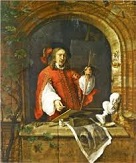

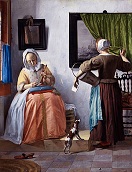

1662 The Cape Colony in South Africa numbers 250 white settlers. On Jan. 1 Samuel Pepys "did with my elbow hit my wife a great blow over her face and neck, which waked her with pain, at which I was sorry, and to sleep again" - not another pepys out of you? On Mar. 13 the Lowestoft Witch Trial in Suffolk, presided over by Sir Matthew Hale (1609-76) executes two women as witches - some will win, some will lose, some only what? On May 9 the first Punch and Judy marionette show starring hook-nosed humpbacked Punch and his shrewish wife Judy is performed in England at Covent Garden in London, as noted by Samuel Pepys in his diary; puppetmaster is Pietro Gimonde (Signor Bologna). On May 19 the Earl of Clarendon's Act of Uniformity gives assent to a revised English Book of Common Prayer, and requires clergymen, college fellows, and schoolmasters to accept it, thus making it impossible for Anglican bishops to continue in communion with bishops of other churches - like Lawrence Welk vs. rock fans? On May 21 I'm-too-sexy-for-my-hat Charles II of England marries unpopular Roman Catholic Catherine of Braganza (1638-1705), daughter of King Joao (John) IV of Portugal, who arrived in Portsmouth, England on May 13/14 wearing Portuguese dress; the public service in the chapel of Domus Dei is Anglican, the secret one Roman Catholic; her dowry of £300K is sweetened by the ports of Tangiers (under Moorish control) and Bombay, as well as free trade with a number of Portuguese possessions; on Sept. 30 they enter London with a large procession incl. Portuguese bagpipe players, meeting matchmaker Henrietta Maria, the Queen Mother, who wants her charms to tame him, only to see him continue hooking up with his mistresses, aided by her Old Maid status (23-y.-o.) and three miscarriages; she goes on to introduce Portuguese goods to the court incl. cane, lacquer, cotton, and porcelain, hooking Charles II on tea and causing him to introduce it to the English court; meanwhile Afonso V of Portugal (b. 1643) puts away his mother Luisa de Guzman (also the mother of Catherine of Braganza), and assumes his reign; too bad, he is partially paralyzed and mentally unstable, causing his brother Peter II to plot to put him away, which he does in Jan. 1668, banishing him to the Azores then Sintra for life (Sept. 12, 1683) and ruling as regent. On June 14 religious dissenter (former Mass. Bay Colony gov.) Sir Henry Vane Jr. (b. 1613) is executed for treason. On July 12 two Suns appear in the sky at the same time at Chard and Crewkerne in England; a number of other odd occurrences prompt the 1667 pub. of Annus Mirabilia by John Dryden - Millennium Fever causes hallucinations? In Aug. the British Brigade for Portugal is raised by Frederick Schomberg, 1st Duke of Schomberg, fighting until mid-1668. In Aug. butcher pirate Christopher Myngs is unleashed again on Jamaica in order to undermine Spanish control of the area, and encouraged to wreck the infrastructure, causing him to promise his buccaneers unlimited plunder and raping, this time with the support of British Jamaican gov. Lord Windsor, who fires a bunch of soldiers and makes them sign up; they start out by sacking Santiago de Cuba, causing buccaneers from all over the Caribbean to flock to him when he announces a new expedition next year, ending up with 14 ships and 1.4K pirates, the largest buccaneer fleet in history so far, incl. Henry Morgan and Abraham Blauvelt. The original John Brown's Body is more like John Bowne's Sperm Bank? In Sept. 34-y.-o. English settler John Bowne (1628-95) is arrested by Peter Stuyvesant's sheriff Resolve Waldron at his 1-room farmhouse (oldest house in New York City, built in 1661) in Vlissingen (modern-day Flushing, Queens) in New Amsterdam on the charge of "abetting an abomination" for permitting Quakers to worship with his wife in his home; he is deported to Amsterdam for 19 mo. until he gets the Dutch West India Co. to enforce the 1657 Flushing Remonstrance, order Gov. Peter Stuyvesant to halt persecution of religious minorities, and allow him to return to his little ole home, which later is hailed as the "cradle of religious tolerance in America" (turned into a museum in 1947); seven U.S. presidents later descend from him (John and J.Q. Adams, Lincoln, Nixon, Ford, G.H.W. Bush and G.W. Bush), and four New York City mayors (all before 1840) (John Lawrence, Marinus Willett, Walter Bowne, and Cornelius Lawrence). With 1666 closing in, the govt. steps in with its own FEMA and tries to control where people can be and what they can read? Charles II's Irish Parliament in Dublin passes the Act of Settlement empowering justices to return disbanded soldiers who might become a recipient of poor relief to his or her (or her hubby's) place of settlement; meanwhile his English Parliament passes the first Licensing Acts, restricting the number of licensed master printers and censoring new pubs. by requiring approval by the secy. of state, lord chancellor, archbishop of Canterbury et al., plus prohibiting anon. pubs.; they are temporarily lifted in 1679, causing a spate of pubs., then resumed until 1695. Jean Baptiste Colbert, having gotten rival Nicolas Fouquet out of the way, and his office of supt. of finance abolished, becomes French controller-gen., turning France to a mercantilist policy. The Battle of Hapsburg in Fischler sees 20 Objectionists hold off hundreds of Vaticine soldiers. Charles II of England sells Dunkirk to France for £400K. Charles II grants a liberal charter to Connecticut; independent New Haven, known for harboring regicides is absorbed. The Va. Colony passes a law that children are born with the free or slave status of their mother, not their father as in English common law because Africans are foreigners not English subjects, allowing lifelong slavery for blacks. Charles II restores the Scottish Episcopalian Church and demands that ministers obey bishops, then outlaws the Covenants, causing 270 ministers to lose their livings for failing to conform; when others try preaching in open air conventicles, Charles bans these too, which only makes them madder. Zheng Chenggong (Koxinga) dies, and his son Zheng Jing (1642-81) (a sedative formula?) becomes leader of the pirates of Taiwan. Wampanoag leader Massasoit dies, and is succeeded by his son Wamsutta (Moonanam) (Alexander) (-1663) (until 1663). Rama Varma dies, and Goda Varma (d. 1663) becomes ruler of Cochin. The French make another attempt to colonize Bourbon (Reunion) Island (which has over 100K acres of forests and can't be that bad), founding coffee and sugar plantations and shipping slaves in from East Africa, but by 1717 the pop. is only 2K and pirates use it as a base. The pope declares that religious fasts are not broken by consuming chocolate drinks, causing a huge increase in consumption throughout Europe. Boston establishes the first almshouse in the British Am. colonies. The Society of Foreign Missionaries of Paris sets up shop in the capital of Siam. A heart tax of 2 shillings is imposed in Ireland; it pisses people off so much that it is abolished in 1689. In Jamestown, Va. the children of all slave women are declared slaves in perpetuity. Salaries of Anglican ministers in Va. are set at the value of 13,333 pounds of tobacco leaf. The last silver pennies are minted in London. The Royal Society of London receives a royal charter from Charles II, becoming England's major center of scientific activity until the 19th cent.; women are excluded; it begins separating science from theology, leading to modern godless Big Science? Masumi Sake begins to be made in Japan. Architecture: Louis XIV appoints Charles Lebrun (1619-90) as chief artistic advisor for his Versailles Palace project; Andre Le Notre (1613-1700) designs the park and gardens. Inventions: Science: Isaac Newton's teacher Isaac Barrow (1630-77) first describes time as a line. John Graunt discovers that English life expectancy is now 27 years - now that they're beginning to drink tea? Robert Hooke (1635-1703) is appointed curator of experiments at the Royal Society of London, and wastes no time, becoming the first to see, describe, and name cells in cork using a microscope. English economist Sir William Petty (1623-87) invents statistical mathematics. Nonfiction: Anon., The Life of Mrs. Mary Frith; sensationalized bio. of London pickpocket-pimp Moll Cutpurse (1584-1659). Anon., Poor Robin's Almanac (1st ed.). Robert Boyle (1627-91), Physiological Essays. Mary Cavendish, Duchess of Newcastle-upon-Tyne (1623-73), Orations. Rene Descartes (1596-1650), Treatise on the World (1662, 1664) (posth.); proposes the Dualistic Model of Reality, mind vs. matter. Thomas Fuller (1608-61), The Worthies of England (posth.). Jeremiah Horrocks (1619-41), Venus in Sole Visa (posth.). Sir Henry Marten (1602-80), Henry Marten's Familiar Letters to His Lady of Delight; to his mistress Mary Ward. Sir William Petty (1623-87), A Treatise of Taxes and Contributions; introduces his invention of statistical mathematics. Phineas Pratt, A Declaration of the Affairs of the English People That First Inhabited New England. Gaspar Schott (1608-66), Physica Curiosa (Wurtzburg); declares Dowsing to be of the Devil. Benedict de Spinoza (1632-77), Tractatus de Intellectus Emendatione (On the Improvement of the Understanding); Ethics Ordine Geometrico Demonstrata (1662-75); pub. in 1677; opposes Rene Descartes' mind-body dualism; "Man is a social animal." Art: Gabriel Metsu (1629-67), Game-Dealers' Shop; Man Writing a Letter (1662-5) (1664-6?); Woman Reading a Letter (mid-1660s); his magnum opus? The Tabby Cat; The Sleeping Sportsman; The Repast; Mother Nursing Her Sick Child; Amateur Musicians; Duet; Music Lesson; Couple Enjoying a Meal; him and his wife? Music: Francesco Cavalli (1602-76), Ercole Amante (ballet opera) (Paris). Plays: Samuel Butler (1612-80), Hudibras, Pt. 1 (Dec.); Pt. 2 1664; Pt. 3 1678; 1st ed. of all three parts in 1684; anti-Puritan satire about knight errant Sir Hudibras, which impresses Charles II, and with his backing becomes an Englsh bestseller; "For his Religion, it was fit/ To match his learning and his wit;/ 'Twas Presbyterian true blue;/ For he was of that stubborn crew/ Of errant saints, whom all men grant/ To be the true Church Militant;/ Such as do build their faith upon/ The holy text of pike and gun;. Decide all controversies by/ Infallible artillery; And prove their doctrine orthodox/ By apostolic blows and knocks;/ Call fire and sword and desolation,/ A godly thorough reformation,/ Which always must be carried on,/ And still be doing, never done;/ As if religion were intended/ For nothing else but to be mended." Moliere (1622-73), L'Ecole (L'École) des Femmes (The School of Women); the first great serious French comedy?; the role of women in society and their proper preparation for it, satiring the materialistic views of the day; denounced as vulgar, obscene, and impious, making it more popular? Poetry: Michael Wigglesworth (1631-1705), The Day of Doom; or, A Poetical Description of the Great and Last Judgment; the first Am. bestseller, by a Puritan minister in Malden, Mass.; God's Controversy with New England; not pub. until 1873. Novels: Madame Marie-Madeleine de La Fayette (1634-93), The Princess of Montpensier (La Princesse de Montpensier), (first novel); a roman a clef about an adulterous love affair in the court of Louis XIV. Births: English classical scholar-critic Richard Bentley (d. 1742) on Jan. 27 in Oulton (near Wakefield), West Riding, Yorkshire; educated at St. John's College, Cambridge U.; founder of the 18th cent. English school of classical criticism. English/Scottish queen (1689-94) Mary II (d. 1694) on Apr. 30 in London; daughter of James II/VII (1633-1701) (son of Charles I and Henrietta Maria) and 1st wife Anne Hyde (1637-71); wife of William III (1650-1702); gets a feminine artistic Protestant education. German (Dresden) architect Matthaus Daniel Poppelmann (Matthäus Daniel Pöppelmann) (d. 1736) on May 3 in Herford. Bavarian elector (1679-1726) Maximilian II Emanuel (d. 1726) on July 11 in Munich; son of Ferdinand Maria and Henriette Adelaide of Savoy. Welsh Nonformist minister Matthew Henry (d. 1714) on Oct. 18 in Broad Oak, Iscoyd (near Shropshire). English clergyman-poet-writer Samuel Wesley the Elder (d. 1735) on Dec. 17 in Dorset; husband of Susanna Wesley (1669-1742); father of John Wesley (1703-91) and Charles Wesley (1707-88); educated at Exeter College, Oxford U. Deaths: Bohemian winter queen Elizabeth Stuart of Bohemia (b. 1596) on Feb. 13 in Leicester Fields, England; dies while visiting her nephew Charles II. Former Mass. Bay Colony gov. Sir Henry Vane Jr. (b. 1613) on June 14 (executed). German composer Johann Cruger (b. 1598) on Feb. 23. German-born polymath Samuel Hartlib (b. 1600) on Mar. 10 in England. English botanist-gardner John Tradescant the Younger (b. 1608). Austrian archduke Leopold Wilhelm (b. 1614) on Nov. 20. English Unitarian minister John Bidle (b. 1615). French savant mathematician-physicist-philosopher Blaise Pascal (b. 1623) on Aug. 19 in Paris; blazes out at age 39 after rejecting medical care, with the soundbyte: "Sickness is the natural state of Christians"; last words: "May God never abandon me"; leaves Pensees (Pensées) (Fr. "Thoughts") (pub. 1670), which anticipates Existentialism, Pragmatism, and Voluntarism, and contains the first formal use of decision theory; section 180 incl. the immortal soundbyte: "Had Cleopatra's nose been shorter, the whole face of the world would have been changed"; section 223 contains Pascal's Wager, which claims that there is an infinite gain or loss if God exists, hence a rational person should live as though he does, because if God does not exist, there is only a finite possible loss; "For after all what is man in nature? A nothing in relation to infinity, all in relation to nothing, a central point between nothing and all and infinitely far from understanding either. The ends of things and their beginnings are impregnably concealed from him in an impenetrable secret. He is equally incapable of seeing the nothingness out of which he was drawn and the infinite in which he is engulfed"; "Diversion is the only thing that consoles us in our wretchedness, and yet diversion is itself the greatest of our miseries. For it is diversion above all that keeps us from seriously taking stock of ourselves and so leads us imperceptibly to perdition": "Men never do evil so completely and cheerfully as when they do it from religious conviction"; "The heart has its own reasons which reason does not know" - he quit thinking and was not? Persian Jewish poet-historian Baba'i ben Lutf (b. ?); leaves The Book of a Forced Convert (Kitab-i Anusi), in 5.3K Persian verses written in Hebrew script, explaining how converted Jews pretend to be Muslim but stay Jewish inside.







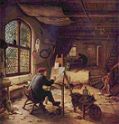
1663 Plague ravages London. On Jan. 8 the Dutch capture Cochin in S India from the Portuguese; Goda Varma surrenders to the Dutch; the Portuguese leave Cochin; Veera Kerala Varma (d. 1687) becomes the puppet ruler of Cochin. In Feb. Sir Christopher Myng and his pirates sack San Francisco de Campeche, but stink themselves up with atrocities that embarrass Charles II, who orders them to cease their attacks in Apr. and appoints Barbados planter Col. Sir Thomas Modyford, 1st Baronet (1620-79) as the new British gov. of Jamaica next year (until 1670); too bad, despite the royal orders everybody knows that the authorities look the other way, and the pirates have a free hand till the end of the cent.; meanwhile Barbados is taken back by the English crown, going on to become a prosperous sugar producer. On Mar. 5 emperor (since 1654) Go-Sai (b. 1638) abdicates in favor of his younger brother Reigen (1654-1732) (personal name Satohito), who becomes Japanese emperor #112 (until May 2, 1687). On Apr. 12 the Royal Society's 2nd charter receives the Great Seal; it only admits 29 new members a year. On May 22 after overrunning S Portugal, Spanish troops under Don John of Austria the Younger, son of Philip IV take Evora (Évora), threatening Lisbon 84 mi. to the W. On June 8 the Battle of Ameixial (Estremoz) near Santa Vitoria do Ameixial 6 mi. NW of Estremoz, Portugal is a V for 17K Portuguese troops under the Count of Mertola and the Count of Ericeira over 18.5K Spanish troops under Don John of Austria, who lose 8K casualties, incl. Don John's standard and all their artillery and baggage, and are forced to retreat to Badajoz, after which the 3.7K-man Spanish garrison of Evora capitulates on June 24. On July 15 Charles II of England ignores Spanish claims and grants a royal charter to the Province of Carolina to eight lucky Lords Proprietors (a-leaping?), the Duke of Albemarle (1608-7), Earl of Clarendon (1609-74), Lord John Berkeley (1607-78), Sir William Berkeley (1606-77), the Earl of Craven (1608-97), Sir George Carteret (1610-80), Sir John Colleton (1608-66), and the Earl of Shaftesbury (1621-83), consisting of a huge tract of land in North Am. from the 31st to the 36th parallel; all but the Carteret heirs sell their shares to the crown in 1729, and the charter stays in effect until 1842. On Aug. 15 a UFO is sighted over a lake near the village of Roboziero, Russia - UFO Robot Zero? In Aug. English Capt. Wiliam Hilton names Hilton Head in Port Royal Sound in the newly-chartered area of Carolina. On Dec. 27 Christine Marie (b. 1601) dies, and her pampered son Charles Emmanuel II finally assumes rule of Savoy (until 1675), going on to develop the port of Nice, build a road through the Alps to France, professionalize the army, beautify Turin, and unsuccessfully attempt to gain a passage to the sea via war with Genoa (1672-3). Wamsutta dies, and is succeeded by his younger brother Metacomet (Pometacom) (Philip) (-1676) as king of the Wampanoag (Pokanokets) in Mass.; the English call him King Philip; his capital is in Bristol, Rhode Island, 65 mi. by water from Nantucket. The Turks declare war on the Holy Roman Empire, invade Transylvania and Hungary under grand vizier Koprulu Ahmed, and capture the fortress of Nove Zamky in Slovakia, finally being stopped by bad weather; the imperial diet becomes a body permanently in session in Regensburg. A Dutch fleet under Malacca gov. Balthasar Bort along with a Qing army drive Koxinga's son Zheng Jing from the coast of Fujian (1663-4). The Second Navigation Act of 1663 (Staple Act) (first 1662, 3rd 1670, 4th 1673) attempts to make England the staple (market or trade center) for all goods sent to the colonies, requiring all goods shipped from Europe to America to first be landed in England, and a duty paid before reshipment. Jean Baptiste Colbert forms the colony of New France into a province, with Quebec as capital; the Filles du Roi are created by Louis XIV and colony intendant Jean Talon to import 800 young women to marry male settlers; most modern-day French Canadians are descended from them. The Spanish fort of Zamboanga in Mindanao (founded 1635) is abandoned, and Spain pulls out of the S Philippines for the rest of the cent., allowing the Muslim states to consolidate their power while trading with the Dutch. Regular imports of coffee beans from Mocha, Yemen to Holland begin, causing London coffeehouse owner Pasqua Rosee to sell coffee in Holland next year before opening the first coffeehouse in Holland in The Hague, after which more are opened in Amsterdam and Haarlem. The first gold guinea (21 shilling) pieces are minted in England (until 1813) with gold mined in Guinea. Turnpike tolls are introduced in England. English Tory journalist Sir Roger L'Estrange (1616-1704) is made licenser of the English press. By this year tea is selling in London for 60 shillings/lb. vs. 6 for coffee; by 1700 it begins to be sold by grocers in London as well as tea shops, which are frequented by women as well as men, along with 500+ coffeehouses; by 1750 tea becomes Britain's favorite lower class beverage. English widow (mother of nine) Margaret Fell (1614-1702), a supporter of Quaker man George Fox is sent to prison for refusing the take the Oath of Allegiance after she pleads to Charles II to release a group of Quakers; after release she marries Fox. Blind John Milton (1608-74), er, seeing his first wife die in 1652, then marrying a 2nd time in 1654 and er, seeing her die in 1656, then having to pay a fine and serve time in prison for his support of the Commonwealth, finally marries for a 3rd time, and this babe outlives him. Jean Baptiste Racine returns to Paris, and his poetry soon makes him BMOC, with a royal pension granted next year, allowing him to keep up with Moliere, Pascal, Corneille, and Nicolas Boileau-Despreaux in the brilliant world of 1666 Paris. The works of Rene Descartes are put on the Catholic Prohibited Books Index. Europaische (Europäische) Zeitung begins pub. in Copenhagen. The word "celibacy" (Gr. "living alone") is coined, flipping, er, flopping back and forth between meaning unmarried and sexually chaste. The Third Folo of Shakespeare's works is pub. French finance minister Jean Baptiste Colbert founds the Academie (Académie) des Inscriptions et Belles Lettres (originally the Académie royale des Inscriptions et Médailles until Jan. 1716) in Paris in Feb. by five humanist scholars incl. Jean Chapelain, Francois Charpentier, Jacques Cassagne, Amable de Bourzeys, and M. Douvrier, growing to eight members in 1683, and 40 in 1701, becoming one of the five academies of the Insitut de France (founded Oct. 25, 1795); its charter is "primarily concerned with the study of the monuments, the documents, the languages, and the cultures of the civilizations of antiquity, the Middle Ages, and the classical period, as well as those of non-European civilizations"; in 1803 Constantine Volney established the Prix Volney for works of comparative philology; in modern times it is composed of 55 French members, 40 foreign members, 50 French corresponding members, and 50 foreign corresponding members. Louis XIV of France establishes the Grand Prix de Rome, a 3-to-5-year scholarship in Rome for painters and sculptors, extended to architecture in 1720, music in 1803, and engraving in 1804; in 1725 the HQ moves to the Palazzo Mancini; abolished in 1968. Architecture: On May 7 the Theatre Royal in Drury Lane, London opens, designed by Thomas Killigrew; too bad, it burns down in 1672, and Christopher Wren designs a new one. Gianlorenzo Bernini designs the new Scala Regia (Royal Staircase) in the Vatican, built by Antonio da Sangallo the Younger in the early 16th cent., connecting the Apostolic Palace to St. Peter's Basilica (finished 1666). Yeni (New) Valide Mosque in Istanbul (Constantople) (begun 1597) is finished; in 1665 it is inaugurated with a royal pavilion, mausoleum, school, and market. Inventions: 20-y.-o. English scientist Isaac Newton begins grinding his own lenses to construct a telescope, and begins trying to improve on it by reducing chromatic aberration. Scottish mathematician James Gregory (1638-75) pub. his invention of the compact reflecting Gregorian Telescope, which becomes the std. telescope design for the next 150 years; he also describes a method to measure the Astronomical Unit (Earth-Sun distance) by using the transit of Venus. German physicist Otto van Guericke (1602-86) builds the first frictional static electric generator. Science: John Newton (1622-78) discovers the Binomial Theorem - it wasn't Isaac Newton? Danish physician Nicolaus Steno (1638-86) proclaims that the heart is a muscle - what else is a muscle? Nonfiction: Robert Boyle (1627-91), Touching the Usefulness of Experimental Philosophy. John Bunyan (1628-88), Christian Behaviour: Being the Fruits of True Christianity, Teaching Husbands, Wives, Parents, Children, Masters, Servants etc. How to Walk So As to Please God, with a Word of Direction to all Backsliders; how believers should prove it with good works. Lord Herbert of Cherbury (1583-1648), De Religione Gentilium (posth.) (Amsterdam). Rev. John Eliot (1604-90), The Holy Bible Containing the Old Testament and the New Translated into the Indian Language and Ordered to be Printed by the Commissioners of the United Colonies in New England (Cambridge, Mass.); his tr. of the Geneva Bible into Algonquian (Natick), becoming the first Bible printed in North Am. Regnier de Graaf (1641-73), Disputatio Medica de Natura et Usu Succi Pancreatici; the nature and function of pancreatic juice. James Gregory (1638-75), Optica Promota. Otto von Guericke (1602-86), Protogaea; pieces fossils together to create a unicorn. Gottfried Wilhelm von Leibniz (1646-1716), De Principio Individui (On the Principle of the Individual); his baccalaureate thesis. Garcia da Orta, Indian Plants; by a Portuguese herbalist in Goa. Blaise Pascal (1623-62), L'Equilibre des Liqueurs (posth.). Gaspar Schott (1608-66), Magia Universalis: Anatomia Physico-Hydrostatica Fontium et Fluminum (Wurtzburg). Benedict de Spinoza (1632-77), Principles of Cartesian Philosohy. Art: Pieter de Hooch (1629-84), At the Linen Closet. Adriaen van Ostade (1610-85), Self-Portrait in his Workshop. Nicolas Poussin (1594-1665), The Four Seasons. Guido Reni (1575-1642), Beatrice Cenci; really by his asst.'s daughter Elisabetta Sirani? Salvator Rosa (1615-73), Alexander the Great in the Studio of Apelles (etching). Adriaen van de Velde, Cattle Near a Building. Jan Vermeer (1632-75), Woman with a Balance Weighing Pearls; a woman in front of a table loaded with pearls, coins and jewelry boxes zeroes the balance while standing in front of a painted scene of the Last Judgment. Music: Marc' Antonio Cesti (1623-69), La Dori (opera). Jean-Baptiste Lully (1632-87), Le Ballet des Arts. James Clifford (1622-98), The Divine Services and Anthems; the first collection of words and anthems pub. in London. Plays: Abraham Cowley (1618-67), The Cutter of Coleman Street (comedy). Sir William Davenant (1606-68), The Play-House To Be Let (comedy) (Aug.). John Dryden (1631-1700), The Wild Gallant (first play) (comedy) (Vere Street Theatre, London) (Feb. 5); staged by the King's Co.; a dud. Births: Am. white-as-cotton Boston Puritan clergyman and anti-witch nutcase Cotton Mather (d. 1728) on Feb. 12 in Mass.; son of Increase Mather (1639-1723); educated at Harvard College. English "A Poem in Praise of Tea" dramatist-journalist (Huguenot) Peter Anthony (Pierre Antoine) Motteux (d. 1718) on Feb. 25 in Rouen; emigrates to England in 1685. English High Church Tory Jacobite bishop-politician and man of letters Francis Atterbury (d. 1732) on Mar. 6 in Milton Keynes, Buckinghamshire; educated at Westminster School, and Christ Church, Oxford U. German Lutheran educator (founder of the Franckesche Stiftungen) August Hermann Francke (d. 1727) on Mar. 22 in Lubeck. Am. printer (Quaker) William Bradford (d. 1752) on May 20 in Barwell, Leicester, England; emigrates to Mass. in 1682. French physicist (pioneer in tribology) Guillaume Amontons (d. 1705) on Aug. 31 in Paris. English poet-satirist William King (d. 1712) in London; relative of Edward Hyde, 1st earl of Clarendon; educated at Christ Church, Oxford U. English novelist-playwright-writer Delarivier (Delariviere) (de la Rivière) "Delia" Manley (d. 1724) in Jersey; after marrying her married cousin who then deserts her, she turns to lit. to get even and writes scandalous memoirs disguised as prose romances; one of her sisters is named Mary, causing future historians to confuse them; one of the "Fair Triumvirate of Wit" along with Aphra Behn and Eliza Haywood. Am. Va. planter Robert "King" Carter (d. 1732) in Lancaster Co., Va.; ancestor of six U.S. presidents. Austrian gen. Francois Eugene de Savoie-Carignan (Prince Eugene of Savoy) (d. 1736) in France. Deaths: African queen Ann Nzingha (b. 1582). French violinist-composer Biagio Marini (b. 1594) on Mar. 20. Swedish-German gen. Count Hans Christoff von Konigsmarck (b. 1600) on Mar. 8 in Stockholm. French regent of Savoy (1637-63) Christine Marie (b. 1601) on Dec. 27 in Turin. Italian Jesuit physicist Francesco Maria Grimaldi (b. 1618); described and named the diffraction of light, made one of the first lunar maps, and started the tradition of naming the Moon's features after famous scientists - no relation to the ruling family of modern Monaco? English archbishop of Canterbury (1660-3) William Juxon (b. 1582) on June 4 in Lambeth, London. Scottish judge-statesman Archibald Johnston, Lord Warriston (b. 1611) in Edinburgh (hanged).





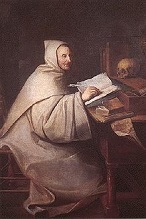


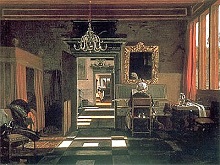

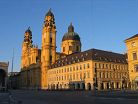
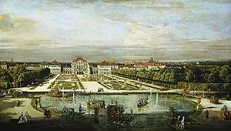
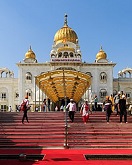
1664 The plague kills 24K in Amsterdam and spreads to Brussels, reaching London by Dec. In Jan. the Second Anglo-Dutch War (ends 1667) is started by the Earl of Clarendon; on May 25 Duke James II of York (eventual successor Charles II) sends an expedition of 300 troops from Portsmouth to capture New Netherlands from Connecticut to Delaware, incl. Ft. Orange, renaming it Albany; on Sept. 8 they capture New Amsterdam from the Dutch, who surrender it peacefully, renaming it New York City (modern-day pop. 8.5M/23M) after the Duke of York (both the city and the province), with Richard Nicolls (1624-72), groom of the duke's bedchamber as British New York Colony gov. #1 (until 1668); the region of Pennsylvania is captured along with it; Charles II also grants the province of Maine (named after the French province, or because the mainland is distinct from its many coastal islands?) to the the Duke of York, who grants the province of New Jersey (named after Carteret's native island of Jersey, or Nova Caesaria) to Sir George Carteret and Lord John Berkeley (brother of the gov. of Va.); after the surrender Dutch gov. of New Holland Peter Stuyvesant goes to Holland for debriefing, then returns, spending the rest of his life cultivating his large farm called the Bouwerij (Bowery) in Manhattan (Algonquian word for island?) (until 1672). On Feb. 1 Croatian-Hungarian soldier Miklos Zrinyi (b. 1620) destroys the Eszek Bridge (built 1566) linking Darda to Osijek across the Sava River and the Baranya Marshes, cutting off the retreat of the Ottoman army, and recaptures several fortresses, incl. Berzence, Babocza, and Pecs; too bad, the Hapsburgs under Count Raimondo Montecuccoli think he's a Hungarian nationalist and don't back him up in his siege of Kanizsa, but that doesn't stop him, and he then successfully sieges Uj-Zrinyivar (Zrinyi-Newcastle), causing HRE Leopold I to make him a prince, Pope Alexander VII to strike a medal promoting him to field marshal, Philip IV of Spain to send him the Order of the Golden Fleece, and Louis XIV of France to create him a peer. In July the Earl of Clarendon's Conventicle Act against Nonconformists is passed by Parliament, prohibiting more than five persons from assembling to worship in any other than the Anglican way except in private households. On Aug. 1 28K-40K Austrians, French and Germans under Count Raimondo Montecuccoli, Jean de Coligny-Saligny, Wolfgang Julius von Hohenlohe, Prince Leopold Wilhelm of Baden, and German Prince Georg Friedrich of Waldeck (1620-92) rout 120K-150K Turks under Koprulu Fazil Ahmed at the Battle of St. Gotthard (Szentgotthard) on the Raab (Raba) River in W Hungary, with 22K Ottoman vs. 6K Christian casualties, and the Turks sign the 20-year Peace (Truce) of Vasvar, and Montecucculi is awarded the Order of the Golden Fleece like Zrinyi; too bad, the Hapsburgs decide not to try to liberate Hungary since they'd rather fight the War of the Spanish Succession, and sell Zrinyi out, giving up his conquests and ceding even more territory to the Turks, with a 200K gold piece tribute to the Porte, causing Zrinyi to rush to Vienna to protest, and after he is rebuffed he returns to Hungary, where he is killed by a wild boar on Nov. 18, causing his supporters to murmur that he was really assassinated by the Hapsburgs. In Oct. the First Royal Marine Regiment is founded in England as the Duke of York and Albany's Maritime Regiment. The Battle of Witebsk sees the Polish-Lithuanian army fight off another Russian invasion, and campaign on Russian soil for the first time in the Thirteen Years' War, forcing peace negotiations. France and Brandenburg become allies. Erfurt becomes part of the electorate of Mainz. Connecticut and New Haven unite. Maryland passes the first Anti-Miscegenation Law, and requires lifelong servitude from blacks; other colonies follow suit. Sweden sells its Gold Coast colonies to the Dutch - and you give, and you give, and you give yourself away. The French West India Co. (Compagnie des Indes Occidentals) is formed (until 1674) to control French trade in Canada, South Am., W Africa and the West Indies, going on to send 45 ships within 6 mo. and compete with the English on the E coast of India; meanwhile the French East India Co. (founded 1604) founds the seaport of L'Orient (Lorient) in Brittany, NW France on the Bay of Biscay, with its harbor 4 mi. from the sea at the junction of the Blavet and Scorff Rivers, turning it into a military fort in 1690. The elite royal Musketeers of the Guard in France (founded 1622), which used to be split into a co. for the king and one for the late Cardinal Mazarin are reorganized (until 1776) into Grey Musketeers (from the color of their horses) and Black Musketeers, incl. Isaac de Portau, Henri d'Aramitz, Armand d'Athos, and Charles de Batz, all from Gascony, who are later (1844) transformed into "The Three Musketeers" by Alexandre Dumas; Cyrano de Bergerac later claims to be from Gascony to enhance his own military standing? The English Long Parliament prohibits reading lessons from the Bible Apocrypha in public. German Roman Catholic missionary-astronomer Johann Adam Schall von Bell (1591-1666) is arrested and condemned to death in China for comparing the Western to the Chinese calendar; he is set free next year, but the charges are left hanging on his head in case he opens his big mouth again - does he look like Harry Potter? The shut-your-mouth Trappist Order of Cistercians is founded by Armand-Jean le Bouthillier de Rance (Rancé) (1626-1700) at La Trappe Abbey in La Trappe, Normandy, becoming known for beer brewing - did they cut their hair with the dingleberry scissors again? Florida aborigines begin growing watermelons from Africa. Celery is first used in the English colonies as a food - in addition to ass wipe and sex toy? The French horn becomes an orchestral instrument. French furniture becomes the fashion in European palaces and castles. The large periwig style is introduced in Europe. After relegalizing horseracing (banned in 1654 by Oliver Cromwell), Charles II founds the Newmarket Town Plate for horseracing in Newmarket (65 mi. N of London). Architecture: Christopher Wren begins the Sheldonian Theatre in Oxford, England (finished 1668). Baroque Italian architect Agostino Barelli (1627-87) is invited to Munich by Bavarian electoral couple Ferdinand Maria (1636-79) and Henriette Adelaide of Savoy (1636-76) (really it was her idea, since she is Italian and just goes for that Baroque stuff) after the birth of their son Maximilian II Emanuel (1662-1726) to build the Theatinerkirche (Theatine Church St. Cajetan) (finished 1690), and to draft plans for the Nymphenburg Palace (Castle of the Nymphs) (finished 1675). The Sikh Gurudwara Bangla Sahib temple is built in Delhi, India, starting out as a bungalow, growing into a small shrine in 1783, and rebuilt after 1947 with a golden dome and tall flagpole. Science: Isaac Barrow gives lectures at Cambridge U. showing that Isaac Newton's method of finding tangents is the inverse of the method of finding areas. Francesco Folli (1624-85) invents the Hygrometer to measure the relative humidity of the air - not hydrometer, that measures specific gravity of liquids? English scientist Robert Hooke (1635-1703) observes a double star (not necessarily a binary star) in Aries. Nonfiction: Anon., Poor Robin's Almanac (1665-1824). Nicolas Boileau-Despreaux (1636-1711), Dialogue des Heros de Roman; disses the artificial poetical romances of his day. Mary Cavendish, Duchess of Newcastle-upon-Tyne (1623-73), Philosophical Letters. Charles Cotton (1630-87), The Compleat Gamester. Rene Descartes (1596-1650), Traite de l'Homme et de la Formation du Foetus (posth.) (Lyons); mechanistic interpretation of the animal body; argues that blood circulates at all times; describes how the nerve impulse is transmitted from the eye to the pineal gland and then to the muscles - quick, we got two years left? Kashif al-Din, Treatise on Coffee and Tea; dedicated to Shah Abbas II. John Evelyn, Sylva. James Howell (1594-1666), Discourse of Dunkirk. Henry More (1614-87), Apology. Thomas Mun (1571-1641), England's Treasure by Foreign Trade (posth.); contains containing several arguments for mercantilism, becoming the first to pub. a theory of the balance of trade. Samuel Whiting (1633-1713), A Discourse of the Last Judgment; real popular, well-timed? Thomas Willis (1621-75), Cerebri Anatome (Anatomy of the Brain); describes his research into the anatomy of the brain along with his discovery of the Circle of Willis, and coining the term "neurology"; traces the optic tract to the thalamus. Roger Williams (1603-83), Bloody Tenant. Art: Frans Hals (1580-1666), The Regenten of the Old Men's Almhouse; The Regenten of the Old Women's Almhouse; his masterpieces? Pieter de Hooch (1629-84), Young Woman Weighing Gold. Nicolas Poussin (1594-1665), Apollo and Daphne. Jan Steen (1626-79), The Christening Feast. Jan Vermeer (1632-75), Woman with a Pearl Necklace. Emanuel de Witte (1617-92), Interior with a Woman Playing the Virginal; masterful use of light. Music: Heinrich Schutz (1585-1672), Johannes Passion; Christmas Oratorio (Dresden). Plays: Samuel Butler (1612-80), Hudibras, Pt. 2; 1st part 1662; 3rd part 1678; "Spare the rod and spoil the child" (later often confused for a Biblical quotation, e.g., Proverbs 13:24, "He that spareth his rod hateth his son; but he that loveth him chasteneth him betimes") - yellow ribbon for before-after anti-MF timing? John Dryden (1631-1700), The Rival Ladies (tragicomedy); makes him an instant success; he goes on to become England's #1 dramatist. George Etherege (1635-91), The Comical Revenge, or Love in a Tub (comedy) (debut); a hit, it gains him the patronage of the court. Sir Robert Howard (1626-98) and John Dryden (1631-1700), The Indian Queen (semi-opera). Moliere (1622-73), Le Tartuffe (Tartufe), or The Imposter/Hypocrite; poses as a holy man to con the merchant Orgon, who gives him everything, even his daughter; contains a veiled attack against the anti-Louis XIV Compagnie du Saint-Sacrement, which allegedly dissolved in 1665. Jean Baptiste Racine (1639-99), La Thebaide our Les Freres Ennemis (The Thebaide or the Enemy Brothers) (first play); acted by Moliere's co. Joost van den Vanden (1587-1679), Adam in Ballingschap (Adam in Exile). Poetry: Charles Cotton (1630-87), Scarronides, or the First Book of Virgil Travestie; pub. anon. Istvan Gyongyosi (1620-1704), Muranyi Venus (Kosice); in honor of his benefactor's wife Maria Szecsi. Births: French Roman Catholic priest (turned atheist) Jean Meslier (d. 1729) on Jan. 15 in Mazerny, Ardennes. English Bleinheim Palace, "The Relapse", "The Provoked Wife" Whig dramatist-architect Sir John Vanbrugh (d. 1726) on Jan. 24 in London; grows up in Chester after being driven out by the 1665 London plague; father owns a sugar factory; collaborator of Nicholas Hawksmoor (1661-1736). Turkish sultan #22 (1695-1703) Mustafa II (d. 1703) on Feb. 6 in Edirne Palace; son of Mehmed IV (1642-93); brother of Ahmed III (1673-1736); father of Mahmud I (1696-1754) and Osman III (1699-1757). Swiss Push/Shadow Theory of Gravitation mathematician-scientist Nicolas Fatio (Facio) (Faccio) de Duillier (d. 1753) in Basel; educated at the U. of Geneva; inventor of the first method for fabricating jewel bearings for clocks and watches. English engineer (steam engine inventor) (Baptist) Thomas Newcomen (d. 1729) in Feb. German Amber Room Baroque sculptor-architect Andreas Schluter (d. 1714) on May 20 in Hamburg. Italian cardinal-statesman Giulio Alberoni (d. 1752) on May 30 (Old Style) in Fiorenzuola d'Arda, Parma. Dutch Rococo still-life painter Rachel Ruysch (d. 1750) on June 3 in The Hague; daughter of Frederik Ruysch (1638-1731) and Maria Post, daughter of architect Pieter Post (1608-69); student of Willem van Aelst (1627-83); wife (1693-) of Juriaen Pool (1665-1745), with whom she has 10 children. English "Alma or The Progress of the Mind" poet-diplomat Matthew Prior (d. 1721) on July 21 in Wimborne Minster, East Dorset; educated at Westminster School and St. John's College, Cambridge U. English celeb Charlee Lee Fitzroy, Countess of Lichfield (d. 1718) on Sept. 5; illegitimate daughter of Charles II and Barbara Villiers, 1st duchess of Cleveland. Italian antiquarian abbate Francesco (de') Ficoroni (d. 1747) near Lugnano. Deaths: Dutch politician Theodor Reinking (b. 1590) on Dec. 15 in Gluckstadt, Holstein. Spanish painter Francisco de Zurbaran (b. 1598) on Aug. 27 in Madrid; dies in poverty. French mathematician Antoine Laloubere (b. 1600) on Sept. 2 in Toulouse. German poet-dramatist Andreas Gryphius (b. 1616) on July 16. Italian composer Barbara Strozzi (b. 1619). Croatian-Hungarian poet-soldier Miklos Zrinyi (b. 1620) on Nov. 18 in Kursanecz (near Csaktornya) (killed by a wild boar) (assassinated by the Hapsburgs?). Anglo-Welsh poet Katherine Philips (b. 1632) on June 22 in London (smallpox); leaves Letters of Orinda to Poliarchus (pub. in 1705-9).




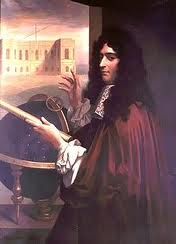



1665 On Mar. 12 the Duke of York's Laws for the Government of the Colony of New York are proclaimed in Hempstead, Long Island by N.Y. gov. (1664-8) Richard Nicolls (until 1683), providing for jury trial, proportional property taxation, and procedures for land patents; on June 12 England installs a municipal govt. in New York City. On June 13 the English under Duke James Stuart of York and Albany and vice-adm. Christopher Myngs defeat the Dutch fleet at the naval Battle of Lowestoft, gaining Myngs a knighthood; in Oct. the Dutch block the Thames River; Canterbury-born English babe Aphra Behn (1640-89), who grew up a slave in Dutch Guiana (Suriname) (and met an African prince?), then was brought to England in 1658 and married to an English merchant of Dutch extraction (who dies in 1666) is sent as a spy to Antwerp (until 1667) - I behn to Aphrica and I'll never come back? On June 17 the Portuguese (allied to the British) defeat the Spanish at the Battle of Montes Claros near Vila Vocosa, securing Portuguese independence. In July the Great Plague of London breaks out (ends Oct. 1666), with bubonic plague killing 20% of London's 500K pop.; the theatres in London are closed; the dogs and cats are suspected of spreading it, so they are killed, helping the rats spread it faster; tobacco smoking is thought to ward off the plague and is made compulsory at Eton; plague also rages in Cologne and in the Rhine district for the next five years. On Sept. 17 Spanish king (since Mar. 31, 1621) Philip IV (b. 1605) dies, leaving the Spanish Empire at its zenith at 3B acres, and his Hapsburg-inbred 4-y.-o. son Charles (Carlos) II (the Bewitched) (1661-1700) becomes king of Spain, Naples, and Sicily (until Nov. 1, 1700), with his mother Mariana of Austria as regent, growing up to become mentally-retarded and sterile, becoming the last of the Spanish Hapsburgs. In Oct. the Earl of Clarendon's Five-Mile (Oxford) Act (Act for Restraining Non-Conformists from Inhabiting in Corporations) puts a cramp on Nonconformist ministers in England, requiring them to take an oath of nonresistance which incl. not coming within 5 mi. of any town or place where they had been ministers; the law proves impossible to enforce - but "IT" is only a year away? On Nov. 14 the Lex Regia introduces absolutism into Denmark. On Dec. 23 the Irish Parliament passes the Act of Explanation to settle the land question. Jean Baptiste Colbert becomes France's leading statesman, reorganizing the entire economy, performing miracles with finances, model factories, trading and colonizing companies and infrastructure projects, which end up being undermined by spendthrift Louis XIV. The English Parliament prohibits imports of Irish cattle and dairy products. Ethiopian emperor (1632-67) Fasilides (1603-67) orders the "books of the Franks" (Roman Catholics) burnt. About this year the Kingdom of Lunda in modern-day Dem. Repub. of Congo (DRC), NE Angola, and NW Zambia, centered in Katana is founded by Luba king Ilunga Tshibinda, who becomes king (mwanta yamvo) #1 of a confederacy of chieftains, with capital in Asokwele, growing from 150K sq. km in 1680 to 300 sq. km in the mid-19th cent., with a pop. of 175K; too bad in the 19th cent. the Western-armed Chokwe invade, ending the kingdom and establishing their own until 1884, when the territory is divided between Portuguese Angola, the Congo Free State of Belgian king Leopold II, and the British, becoming Angola, Dem. Repub. of Congo (DRC), and Zambia. The French East India Co., head by Francois Caron (1600-73) unsuccessfully attempts to set up a colony on wild Madagascar, but succeeds on the nearby islands of Bourbon (Mauritius) and Ile-de-France (Reunion). The Society of Foreign Missionaries of Paris tries to set up shop in Cambodia but is stopped by the Spanish Dominicans. The first modern census is taken in Quebec. The U. of Duisburg in Germany is founded by Brandenburg Great Elector Frederick William (until 1818). The U. of Kiel (originally the Academia Holsatorum Chiloniensis) in Kiel, Germany is founded by Christian Albert, duke of Holstein-Gottorp. Caleb Cheesehateaumuck becomes the first North Am. Indian to take an A.B. degree (Harvard). :) The Prince Archbishop of Munich sells 7K of his subjects as soldiers. New Jersey is organized as an English colony under Gov. Philip Carteret, with capital (until 1686) at Elizabeth (founded 1664), which is settled by colonists from Jamaica, Long Island and named after Carteret's wife. French traveler J.B. Tavernier describes the 240 carat Great Mogul Diamond in India, which later disappears and is possibly the father of the 106.1 carat Koh-i-Noor Diamond. The biweekly London Gazette begins pub., listing official announcements and appointments, bankruptcies, and wartime casualties. The Royal Society begins pub. the monthly Philosophical Transactions, the first scientific journal in English in Mar., incl. a report on "The New American Whalefishing about the Bermudas". Louis XIV adopts Moliere's troupe as his own servants. Sports: New Market, the first thoroughbred horseracing track in colonial Am. is built in Long Island, N.Y.; the first known turf race is held in New York City. A horserace is held in Sandymount, Dublin, Ireland in front of a crowd of 5K, presided over by Lord Deputy Essex, who presents the winner with a valuable plate. Architecture: Gianlorenzo Bernini finishes the High Altar of St. Peter's in Rome (begun 1656) - just in time? Science: Italian astronomer Giovanni (Gian Domenico) Cassini (1625-1712) discovers Jupiter's Great Red Spot, and determines the rotations of Jupiter, Mars, and Venus. Charles II's court physician Peter Chamberlen (1601-83) invents forceps for midwives. Dutch physicist Christiaan Huygens first observes automatic synchronization of two clocks suspended on the same beam, along with indirect coupling, which makes two pendulum clocks mounted together swing in opposite directions. Isaac Newton generalizes the Binomial Theorem to allow real exponents. Nonfiction: John Bunyan (1628-88), The Holy City. John Eliot (1604-90), Communion of Churches (Harvard, Mass.) John Glanvill, Scepsis Scientifica; more on the First Cause. Jacques Godefroy (ed.), Codex Theodosianus. Francesco Maria Grimaldi (1618-63), Physico-Mathesis de Lumine (posth.); explains the diffraction of light. A true quantum leap in man's understanding of his world? Robert Hooke (1635-1703), Micrographia; popularizes microscopy; "The most ingenious book that I ever read in my life" (Samuel Pepys); uses the microscope to identify cells, coining the term "cell" for the rigid thingies in cork, which remind him of monks' cells; his 12 in. x 18 in. Drawing of a Flea grosses out sensitive ladies and makes them faint?; he is the first person to examine fossils under a microscope, and concludes they are the remains or traces of long-dead organisms; the microscope is now de rigueur, causing Antony van Leeuwenhoek, Marcello Malpighi, Nehemiah Grew, Jan Swammerdam et al. to bend over and squint - giving future air duct salesmen a job? Sir William Petty (1623-87), Verbum Sapienti; pub. 1691. Francois de La Rochefoucauld (1613-80), Maximes (Maxims); "Hypocrisy is a tribute that vice pays to virtue." Izaak Walton (1593-1683), The Life of Richard Hooker. Art: Gerrit Dou (1613-75), Violinist; Astronomer by Candlelight. Charles LeBrun (1619-90), The Massacre of the Innocents. Bartolome Esteban Murillo (1617-82), Jacob Laying the Peeled Rods Before the Flocks of Laban; Rest on the Flight into Egypt (1665-70). Adrien van Ostade (1610-85), The Physician in His Study. Rembrandt van Rijn (1606-69), The Jewish Bride; The Slaughtered Ox. Jan Vermeer (1632-75), Girl with a Pearl Earring ("the Dutch Mona Lisa"); The Artist's Studio (1665-6). Plays: Pierre de Brantome (1540-1614), Les Dames Galantes (posth.). John Dryden (1631-1700), The Indian Emperor, or the Conquest of Mexico by the Spaniards (tragedy) (Theatre Royal, Drury Lane) (spring); staged by the King's Co.; stars Michael Mohun as the Emperor, Charles Hart as Cortez, Edward Kynaston as Guyomar, Nicholas Burt as Vasquez, William Wintershall as Odmar, Anna Marshall as Almeria, and William Cartwright as the Priest; features a "gorgeously feathered cloak" brought back from Suriname by Aphra Behn; defines the genre of heroic drama (rhymed heroic tragedy). Moliere (1622-73), Don Juan (tragicomedy); L'Amour Medecin (Médecin). Philippe Quinault (1635-88), Mere Coquette. Jean Baptiste Racine (1639-99), Alexandre le Grand; after he claims Moliere's co. botches it, he moves over to the rival co. of the Hotel de Bourgogne permanently. Francois de La Rochefoucauld (1613-80), Ye Bare and Ye Cubb; first play performed in the English colonies (Virginia). Novels: Jean de La Fontaine (1621-95), Contes et Nouvelles en Verse (1665-74). Richard Head, The English Rogue (picaresque). Births: English/Scottish Stuart (Stewart) queen (1702-14) Anne Stuart (Stewart) (d. 1714) on Feb. 6 in London; last of the Stuart monarchs; 2nd daughter of James II/VII (1633-1701) (son of Charles I and Henrietta Maria) by 1st wife Anne Hyde (1637-71); last monarch of England and Scotland, and first monarch of Great Britain (1707). German botanist Rudolph Jakob Camerarius (Camerer) (d. 1721) on Feb. 12 in Tubingen. Italian "The Seven Sacraments" Baroque painter Giuseppe Maria Crespi (Lo Spagnuolo) (The Spanish One) (d. 1747) on Mar. 14 in Bologna; pupil of Angelo Michele Toni (1640-1708); father of Antonio Crespi (1712-81) and Luigi Crespi (1708-79). French harpsichord player-composer Elisabeth (Élisabeth-Claude) Jacquet de La Guerre (d. 1729) on Mar. 17 in Saint-Louis-en-l'Ile, Paris; world's first female musician? Spanish architect-sculptor Jose Benito de Churriguera (d. 1725) on Mar. 21 in Madrid. Irish soldier James Butler, 2nd Duke of Ormonde (d. 1745) on Apr. 29 in Dublin; son of Thomas Butler, 6th earl of Ossory (1634-80) (son of James Butler, 1st duke of Ormonde); educated at Christ Church, Oxford U. German writer Christian Reuter (d. 1712) in Kutten. English Anglican clergyman Henry Maundrell (d. 1701) in Compton Bassett (near Caine), Wiltshire; educated at Exeter College, Oxford U. Am. "The Sot-Weed Factor" poet Ebenezer Cooke (Cook) (d. 1732) in London, England; emigrates to Md. in ?. Deaths: Dutch dramatist Samuel Coster (b. 1579). English Puritan Mass. gov. John Endicott (b. 1588) on Mar. 15. French painter Nicolas Poussin (b. 1594) on Nov. 19 in Rome. Flemish Jesuit "Acta Sanctorum" writer Jean de Bolland (b. 1596). English prelate John Earle (b. 1601). Spanish Franciscan "Blue Nun" Maria de Agreda (b. 1602) on May 24; leaves The Mystical City of God and Divine History of the Virgin Mother of God, written in 20 days in 1637, burned, and rewritten in 1655-60, then pub. in Madrid in 1670; in 1668 the Franciscans claim that in 1644 she miraculously flew through the air to Mexico (Texas) to convert the natives, the first of 500 trips; her body allegedly never decays, and is examined in 1909 and again in 1989 - what do I have to do to get a sainthood, eh? Spanish king (1621-65) Philip IV (b. 1605) on Sept. 17 in Madrid. French mathematician Pierre de Fermat (b. 1607) on Jan. 12 in Castres.







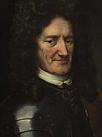

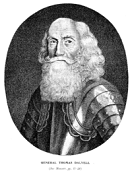



















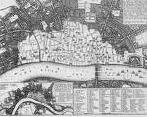
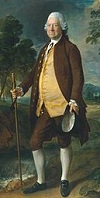
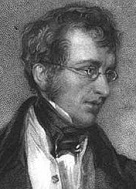
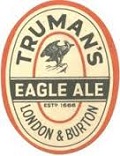
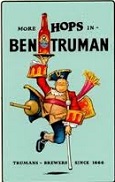
1666 This year contains all the Roman numerals MDCLXVI) once; also 1444, 1446, 1464, 1466, 1644, 1646, 1664. The Millennium Fever (MF) over the Big Year 1666 stirs mass paranoia in Christendom, the smart money being that all those evil scientists and secular pagans (and the antichrist pope and his papist followers, according to Protestants) are going to be consumed in fire just as the unbelievers were consumed in water in the days of Noah; later, when the disappointment sets in, hope springs eternal in the human breast, so anybody born in this year is suspected of being the Devil or the Antichrist, and Armageddon is at least going to happen in his lifetime, so don't give up the faith?; meanwhile never fear, the Scientists are here, as the Annus Mirabilis of English Cambridge U. man Sir Isaac Newton (1642-1727) begins when the plague causes him to be sent home from Cambridge to his home in Woolsthrope, where the world's most famous apple falls from the tree, revolutionizing Science with the stunning realization that the heavens and the Earth are subject to the same universal laws - one little orb falls from the sky, causing their minds to fall from the divine Heavens into the material world of Earth, and like it? Oh Zevi darling, the lady from the fan magazine's here, she wants the lowdown on your love life? Where's the Da Vinci code for this? The MF is really big among Jews this year, allowing Smyrna-born Qabbalistic ascetic Jewish rabbi Sabbatai (Shabbethai) Zevi (Tzvi) (1626-76) (who proclaimed himself Messiah in 1648, got rich in Cairo, then proclaimed himself again on the Jewish New Year last year in the Jewish synagogue in Aleppo to public acclaim, and became de facto ruler of the city, even converting rabbis this time, causing his fame to spread throughout da civilized world, and converts in Avignon, France to plan a trip to Aleppo this spring) decides to go to Constantinople, hoping to crown himself sultan, instead finding Jehovah isn't ready yet and getting arrested at the command of grand vizier Ahmed Koprulu, but when he is treated leniently in his prison in Abydos and allowed to display his great wealth (after paying bribes), his fame spreads throughout da world, causing revolts in Moravia and Sale, Morocco; too bad, in early Sept. Jewish sage Nehemiah ha-Kohen (-1690) from Lwow, Galicia (Poland) arrives and pronounces him a fake, then escapes a murder plot and hikes to Constantinople, telling on him to the sultan after faking conversion to Islam, causing Zevi to be taken to Adrianople, where on Sept. 16 he takes the advice of the sultan's formerly Jewish physician and converts to Islam, wearing a turban, which pleases the sultan, who gives him the title of effendi and gives him a high-paying job as royal doorkeeper, after which his ex-ho wife Queen Sarah and several other followers convert, and he marries a 2nd wife to prove his conversion; meanwhile the punk tries to play both ends against the middle and convert Jews to Islam while converting Muslims to his Qaballistic Judaism, pissing-off the sultan, who banishes him to Montenegro, where he finally croaks; the sultan is barely talked out of extermining all adult Jews in his empire and having all Jewish children brought up as Muslims; diehards continue his Sabbatean Cult in Turkey, with 100K still following him in modern times. On Jan. 22 Mughal emperor (since 1628) Shah Jahan (b. 1592) (Pers. "King of the World") dies in captivity in Agra while mooning the white marble Taj Mahal, leaving plans unfinished to build an identical black marble structure on the other bank of the Jumma River, connected by a silver bridge; his usurper son, Mughal emperor #6 (1658-1707) Aurangzeb (1618-1707) continues his oppressive Muslim rule, trying to forcibly convert the Hindus to Islam, imposing a poll tax, demolishing Hindu temples, and replacing them with mosques, pissing them all off bigtime; meanwhile on Aug. 16 one-less-statistic Hindu Maratha king Jai Shivaji (1627-80) knowing he is facing execution at any time, escapes from house arrest in Agra by pretending to be ill and sending out large baskets filled with sweets to be distributed among the poor, then hiding (along with his son) in them to get past the guards; now quite pissed, he bangs a gong, reorganizes his army, begins building a naval force, then captures Chittagong, regaining all the lost territory by 1668, after which the Marathas start India's longest war in 1681 with them, which they win in 1707 after pioneering guerrilla warfare - imagine basing a religion on a big black rock in the desert, it should be based on a river? In Jan. France quits trying to mediate between England and Holland, allies with Holland, then jointly declares war on England, while Holland allies with the Great Elector and forms a quadruple alliance with Brandenburg, Brunswick and Denmark; the English navy is then defeated in Jan. at the Four Days' Fight (Battle), although rear adm. Sir Robert Holmes (1622-92) distinguishes himself - sure that was fun, who wants to miss out on memories like these, who wants to see my BBQ pictures? In Feb. Charles II returns to London. In the spring the English navy wins a V at the naval Battle of North Foreland under Adm. Prince Rupert (who is back after 20 years spent as a buccaneer and other junkets) and Adm. George Monck; meanwhile English privateers capture Tobago, "land of the hummingbirds", while France takes Antigua, Montserrat and St. Christopher (Kitts) in the Greater Antilles. On June 6 (Gregorian) (Sun.) the world ends - not? On June 11-14 (Gregorian) (June 1-4 Old Style) the naval Four Days' Battle near North Foreland, England is a V for the Dutch under Adm. Michiel de Ruyter over the English under George Monck, 1st duke of Albemarle, with the English losing 10 of 79 ships (1.5K KIA, 1.45K wounded, 1.8K taken POW) vs. only 4 of 84 Dutch ships (1.5K KIA, 1.3K wounded); English vice-adms. Sir Christopher Myngs (b. 1625) and Sir William Berekely, and Dutch lt. adm. Cornelis Evertsen the Elder (b. 1610), vice-adm.Abraham Van der Hurst, and rear adm. Frederick Stachouwer are KIA - time to call Stanley Steamer On June 16 (Gregorian) (June 6 Julian) (Wed.) the world ends - not? - back to the drawing boards? On Aug. 4 (Gregorian) (July 25 Old Style) the naval Battle of St. James Day (North Foreland) (Orfordness) (Two Days' Battle) is a V for the English under Prince Rupert and George Monck, 1st duke of Albemarle over the United Provinces under Adm. Michiel de Ruyter, with the Dutch losing two of their 89 warships (Sneek and Tholen), vs. only one of 90 (Resolution) for the English, and 800 Dutch vs. 300 English KIA. On Aug. 19-20 new hero Sir Robert Holmes stinks himself up by raiding the Dutch islands of Vlie and West-Terschelling and starting an unsporting fire which destroys 250 Dutch merchant ships, becoming known as Holmes' Bonfire. On Sept. 2-5 (Sept. 12-15 Old Style) (early Sun. morning-Wed.) after rainy summers in 1664 and 1665, followed by a bad drought since Nov., making the wooden bldgs. tinder-dry, the Great Fire of London burns 499 acres and kills only a few people after starting in a bakery in Pudding Lane near London Bridge; "10,000 houses all in one flame"; after London lord mayor Sir Thomas Bloodworth is awakened to ask what to do, he replies "Pish, a serving woman might piss it out", then goes back to sleep; too bad, fierce winds whip the flames through the crowded wooden houses to the warehouses on the Thames wharf, and Mister Channel what are you trying to do, give me a heart attack as well?; Charles II and his brother Duke James of York use gunpowder to blow up a row of houses and create a fire break that saves the 1622 Banqueting Hall (where his daddy lost his head in 1649), but flames consume 80% of the walled city, destroying 13.2K houses in a 436-acre area plus another 63 acres outside the city walls, incl. the Old Baley on the W wall of London (rebuilt 1674); homeless Londoners huddle in fields outside the walls, convinced that the fire has been set either by Dutch terrorists in retaliation for the burning of the Dutch fleet by Robert Holmes in Aug., or by papists; London's Guildhall, 44 of the city's rich livery co. halls, the Custom House, the Royal Exchange, St. Paul's Cathedral and 86 other churches are destroyed; the Millennium Feverists score one, but at least the city is cleansed of plague, although other cities with no fires see plague cases decrease; Gen. George Monck manages the city govt., like he did during the 1665 plague; Theatre Royal on Bridges St. escapes the fire, so the plays can go on?; astrologer William Lilly predicted the fire so accurately that he is suspected of starting it; 56-y.-o. jurist Sir Matthew Hale runs the statutory tribunal which for the next six years resolves owner-tenant disputes arising from the fire; on Sept. 16 Charles II demands that a plan for the rebuilding of London be ready in five days, and appoints 34-y.-o. architect Christopher Wren (1632-1723) as the royal surveyor for the project, who goes on to rebuild 52 churches, many of which end up getting destroyed again in the Dec. 29, 1940 City of London Blitz; on July 30, 1669 Wren is officially given the job of replacing Old St. Paul's Cathedral, which is demolished in the early 1670s; it is topped-out on Oct. 26, 1708, and declared complete by Parliament on Dec. 25, 1711, with statues later added to the roof in the 1720s; in 1716 total costs are £1,095,556. On Sept. 17 Welf Duke (since 1635) Augustus the Younger of Brunswick-Luneburg (b. 1579) dies, and the Younger House of Brunswick of the House of Welf splits via secondogeniture, with third (youngest) son Ferdinand Albert I (1636-87) becoming the first duke of Brunswick-Bevern and receiving the Bevern Palace in exchange for conceding the rights to Wolfenbuttel to his elder brother Rudolph Augustus (1627-1704), who makes his young brother Anthony Ulrich (1633-1714) co-ruler in 1685. On Oct. 25 Abbas II (b. 1733) dies after a 25-year reign which virtually restores Persia's glory; too bad, his dissolute son Suleiman (Suleyman) I (1647-94) becomes shah of Persia, going on to almost ruin it all as he retreats into his harem and lets the grand vizier run things; court ministers try an end-around run by plotting to claim that the bum is blind and installing a younger son of Abbas, but a court eunuch betrays the scheme in time for Suleiman to stop it; after 18 mo. his reign is such a mess, with famine and disease among other problems, that he renames himself Safi II in the hope that the pop. will be fooled? A good way to hide soot on your white shirt? On Oct. 28 (Julian) Samuel Pepys writes in his diary, "The King hath yesterday in council declared his resolution of setting a fashion for clothes, which he will never alter", proclaiming that men shall wear vests; a few days later Pepys writes "This day the King begins to put on his Vest, and I did see several persons of the House of Lords, and Commons, too, great courtiers who are in it, being a long cassock close to the body, of black cloth and pinked [slashed] with white silk under it, and a coat over it... and upon the whole, I wish the King may keep it, for it is a very fine and handsome garment." A Pentacle rising plus 666 = ? On Nov. 15 the Pentland Rising in the Pentland Hills of Lothian, N Scotland led by 900 die-hard Scottish Presbyterian Covenanters begins; on Nov. 2.6K die-hard Charles II supporters of the Scottish Royal Army led by Gen. Sir Thoms "Bloody Tam" Dalyell of the Binns, 1st Baronet (1615-85), "the Muscovite Devil" responds with a massacre at Rullion Green, killing 50+; Presbyterians are ruthlessly suppressed by court order beginning in Dec., and all legislation favoring Presbyterianism is repealed and the episcopacy restored (until 1689). The Treaty of Cleves between Brandenburg and Neuburg partitions Julich-Cleves. Hungarian nobles begin a revolt against HRE Leopold I. The Dutch capture Celebes in Malaysia from the Portuguese. Go le Tellier it on the mont? Francois-Michel Le Tellier, Marquis de Louvois (1641-91) succeeds his daddy Michel Le Tellier as French war secy. to Louis XIV, going on to increase the French army to 400K men to fight four big wars by 1713, while working with kingy and his daddy to crush pesky Huguenots and keep the army pure Roman Catholic; meanwhile his brother Charles-Maurice Le Tellier (1642-1710) graduates from the Sorbonne with a doctorate in theology and is ordained a priest, rising to archbishop of Reims in 1671 at age 29. Francois Athenais de Rochechouart-Mortemart, Marquise de Montespan (1641-1707) begins hooking up with Louis XIV, becoming his mistress and bearing him seven children starting in Mar. 1669 - this is my-y-y-y country? Approval for the 65-lock 180-mi. (later 240-mi.) Canal du Midi (Languedoc Canal) (Canal of the Two Seas) (finished 1681) is given to Pierre Paul Riquet (1609-80), connecting the Mediterranean and the Atlantic (Bay of Biscay) along the River Garonne, permitting the nasty Straits of Gibraltar to be skipped - weather is not a problem in our huge indoor showrooms? French explorer Rene Robert Cavalier, Sieur de La Salle (1643-87) voyages to the New World to occupy a land grant on the St. Lawrence River, where he plans to establish trading posts on the Wisconsin River to buy furs from trappers. The modern-day city of Newark (New Ark of the Covenant) on the Passaic River in the New Jersey Colony (modern-day pop. 277K) is founded by Connecticut Puritans led by Robert Treat (1622-1710); on Oct. 31, 1693 it is reorganized as a township, and granted a royal charter on Apr. 27, 1713, then incorporated on Feb. 21, 1798; on Apr. 11, 1836 is is incorporated as a city. To keep up with the court of Louis XIV, English king Charles II issues a decree hat in the English court men must wear a long coat, a waistcoat ("petticoat"), a cravat (precursor of the necktie), a wig, knee breeches (trousers), and a hat, becoming the start of the business suit - in the Year of the Devil? After Jean Baptiste Colbert talks him into it (hey, you already have one for dance and another for lit.?), Louis XIV of France founds the Academie (Académie) Royale des Sciences, a govt.-run scientific experimental org., which pub. Journal des Savants; Christiaan Huygens and 19 other scientists are elected as founding members (women are excluded); after the French Rev. the word "Royale" is dropped, and its character changes, later becoming the Institut de France - forces you to deal with your demons? The English Parliament declares that English wool will be used for burials instead of cotton or linen, blocking foreign textiles while saving 100 tons of cotton rags annually for paper manufacturing. Louis XIV issues an edict, drafted by Jean Baptiste Colbert, encouraging large families, but it proves ineffectual - he's working, he's working? The English House of Commons passes a bill requiring an investigation of "such books as tend to atheism, blasphemy and profaneness... and in particular the book... of Hobbes called the 'Leviathan'", causing Thomas Hobbes, who had been in favor since the Restoration to freak and begin burning many of his papers, and withhold pub. of three major works, Behemoth: The History of the Causes of Civil Wars of England, Dialogues... of the Common Laws of England, and Historia Ecclesiastica. The first ed. of the 1611 Authorized Version of the Bible without the Apocrypha is pub., although some eds. of the Geneva Bible had been omitting it since 1599. Philipp Jakob Spener (1635-1705) introduces Pietism into the German Lutheran Church. The Great Schism (Raskol) breaks out in the Russian Orthodox Church, with the Old Believers (Ritualists) separating in protest against reforms introduced by Moscow Patriarch Nikon in 1652-66. William Penn is sent to Ireland by his father to look after his estate in County Cork, and when he returns they quarrel when the son's "conscience" won't allow him to take off his hat to anybody, even the king. The Congregation of the Sisters of the Infant Jesus is founded in France. Spanish Baroque painter Juan Carreno (Carreño) de Miranda (1614-85) founds the Trinitarian Order. Jean Baptiste Colberg establishes Gobelin workshops in Paris. Cremona-born Italian musical instrument maker Antonio Stradivari (1644-1737) labels his first violin - to fiddle while Rome burns? Green ribbon after Newton and Milton for anti-MF symbolism? Marc' Antonio Cesti (1623-69) becomes court kappelmeister in Vienna. 19-y.-o. Gottfried Wilhelm von Leibniz (1646-1716) completes his legal studies, applies for a degree of doctor of law, is refused because of his age, leaves his native Leipzig, writes the dissertation On Perplexing Cases (De Casibus Perplexis), and promptly obtains the degree at Nuremberg's univ. town of Altdorf - you can have the career of your dream in nine months? Truman's Brewery (originally Black Eagle Brewery) is founded on Brick Lane in Spitalfields, East London, England by Joseph Truman (-1719); he is succeeded by his eldest son Joseph Truman Jr., followed in 1722 by his younger son Sir Benjamin Truman (1699-1780), who takes advantage of the new porter to ramp-up sales, and makes it the drink of the British royal family in 1737 after another brand is ordered to celebrate the birth of the duchess of Brunswick, and the crowd hates it and throws the barrels into the fire, after which the prince of Wales orders four barrels of Truman's, which they like; in 1788 Sampson Hanbury takes over the brewery, acquiring its first steam engine in 1805, doubling porter production from 100K barrels in 1800 to 200K in 1820; in 1808 Hanbury's nephew Sir Thomas Foxwell Buxton (1786-1845) joins the brewery, which in 1811 becomes Truman, Hanbury, and Buxton, going on to teach all employees to read and write before going on to become an MP and work with William Wilberforce to abolish slavery; in June 1831 Buxton hosts the Cabinet Dinner of 1831, a beefsteak and porter dinner at the brewery attended by 23 cabinet members incl. PM Charles Grey and lord chancellor Henry Brougham; by 1853 Black Eagle is the largest brewery on Earth (400K barrels/year); in 1873 after pale ale becomes more popular then porter, and the local water proves unsuitable, the co. acquires Philips Brewery in Burton; in 1888 it goes public, going on to produce brands incl. Eagle Ale, Eagle Stout, and Trubrown; by 1969 it is the only major independent brewery in London; in 1971 it is acquired by Grand Metropolitan, who merges it with Watney Mann, and cheapens the formula, causing sales to tank; in 1989 it closes; until the 1970s a logo consisting of jolly peg-legged fat man Ben Truman with the motto "There's more hops in Ben Truman" is used. Architecture: Caracas Cathedral in Venezuela is built, becoming the seat of the archbishop of Venezuela. Sports: The Cricket Club is founded at St. Alban's in Hertfordshire, England, with its own cricket ground - it ain't cricket? Inventions: Cheddar Cheese is first made in Cheddar, Somersetshire, England, at the entrance of the rocky 1-mi. Cheddar Gorge on the S side of the Mendip Hills (22 mi. SW of Bristol). Robert Hooke designs a new type of escapement for clocks, with the moving part in the same plane as the balance wheel on which it acts to increase accuracy. Charles II's master of mechanics Samuel Morland (1625-95) invents the first multiplying machine, with a duodecimal (base 20) scale based on English currency, requiring human intervention to enter the carry displayed in an auxiliary dial. Jean de Thevenot (1633-67) invents the carpenter's level, consisting of a bubble floating in a thin liquid-filled glass tube. Science: Gian Domenico Cassini determines the rotation period of Mars to be 24 hours 40 min. (actual value 24 hours 37 min. 22.6 sec.), and discovers the Martian polar ice caps - another ancient god proves to be just orbiting dirt? Italian physician Marcello Malpighi (1628-94) pub. the discovery that bile is secreted by the liver. I walk this empty street on the boulevard of broken dreams? Don't let a migraine upset you? As a total rebuff to the Millennium Feverists who say the world is not worth studying (since this is its last year), Isaac Newton goes into a glorious brilliant Rain Man funk in Woolsthorpe and discovers the Integral Calculus (not dental rot but the branch of mathematics) and the Newton's Law of Universal Gravitation (inverse square law), measures the Moon's orbit, and, when not otherwise occupied, buys a glass prism "to try therewith the phenomena of the colours", becoming the first to deduce that the prism splits white light into a spectrum as a result of the different refractive index for each color; sitting under a you know what kind of tree, he observes a you know what falling, and calculates that at a distance of 1 ft. the attraction between two objects is 100 times stronger than at 10 ft., making the super mental leap that the force exerted by the Earth on the apple is the same as that exerted by the Earth on the Moon; "And the same year [1666] I began to think of gravity extending to the orb of the Moon, and having found out how to estimate the force with which a globe revolving within a sphere presses the surface of the sphere, from Kepler's Rule... I deduced that the forces which keep the Planets in their Orbs must [be] reciprocally as the squares of their distances from the centers about which they revolve: and thereby compared the force requisite to keep the Moon in her Orb with the force of gravity at the surface of the earth, and found them answer pretty nearly. All this was in the two plague years of 1665 and 1666, for in those days I was in the prime of my age for invention, and minded Mathematicks and Philosophy more than at any time since" - Isaac Newton, memo in the Portsmouth Collection, 1714; the Newton pippin is later named to commemorate the Big Apple of 1666 - the first modern scientist walks the Earth, and he's white, Anglo-Saxon, and Protestant, but actually not so modern, as he's still got one foot in the past and believes in alchemy and bizarre Bible theories, taking a few years out of his all-important studies to figure out math and physics, in the belief that the Universe is a giant code and he can crack it; his success paradoxically strengthens belief in astrology? On Dec. 19 French royal physician Jean-Baptiste Denis (Denys) (1640-1704) performs the first known human blood transfusion on Antoine Mauroy, a known wife beater who was found wandering zonked and naked through the streets of Paris, twice transfusing about 10. oz of blood from a "gentle" calf and apparently curing him with a kind of emotional transplant, although he is really suffering from syphilis? Nonfiction: The first Armenian Translation of the Bible is pub. Leo Allatius (1586-1669), Drammaturgia; catalog of Italian musical dramas to date. George Alsop (1636-?), A Character of the Province of Maryland; having visited in 1638, the author pub. a promotional account of Md. in verse and prose that mixes jocularity and seriousness, emphasizing the idyllic nature of the area and whitewashing the Indians? Robert Boyle (1627-91), Origin of Forms and Qualities According to the Corpuscular Philosophy; his view that everything is made of atoms, and that Nature is mechanical in er, nature; Hydrostatical Paradoxes; experiments with fluids. John Bunyan (1628-88), Grace Abounding to the Chief of Sinners, or a Brief Relation of the Exceeding Mercy of God in Christ to his Poor Servant John Bunyan; his spiritual autobio. Mary Cavendish, Duchess of Newcastle-upon-Tyne (1623-73), Observations upon Experimental Philosophy; rejects Aristotelianism and mechanical philosophy in favor of Stoicism; being a woman, her work is pooh-poohed. Charles Chauncy (1592-1672), Antisynodalia Scripta Americana. John Eliot (1604-90), The Indian Grammar Begun; "Some Bones and Ribs in preparation for such a work" for teaching the Algonquian language to Protestant missionaries. Margaret Askew (Fell) (Fox) (1614-1702), Women's Speaking Justified, Proved, and Knowed of the Scriptures; how woman is also created in God's image, and although weak is chosen for his purposes, hence to deny her role is to act on behalf of the Devil, fulfilling the enmity decreed by God between woman and the serpent (Gen. 3:18) - Margaret fell askew, but rebounded like a fox? Robert Horne, A Description of Carolina; one of the first descriptions of the Carolina settlement, intended to attract new blood; Horne (of London) may only have been the pub. Gottfried Wilhelm von Leibnitz (1646-1716), Disserto de Arte Combinatoria (Discussion of the Combinatorial Art); a 19-y.-o. formulates the idea that all reasoning and discovery are reducible to an ordered combination of elements, incl. words, numbers, colors, and sounds; contains his suggestion, based on the work of Raymond Lully, that a mathematical language of reasoning should be developed, which is taken up by George Boole et al. in the 1850s. Jean Mabillon (1632-1707), Life and Works of Saint Bernard, Abbot of Clairvaux. Isaac Newton (1643-1727), The October 1666 Tract; an untitled mss. which describes his method for finding the area between a curve that is the graph of an equation and the horizontal axis, AKA integral calculus. Cardinal Michelangelo Ricci (1619-82), Exercitatio Geometrica, de Maximis et Minimis ("Geometrical Exercises Concerning Maximums and Minimums"); finds maximum value of the tangent to a curve using mathematical induction; reprinted as an appendix to Nicolaus Mercator's 1668 "Logarithmo-Technia". Heinrich Schutz (1585-1672), Historia des Leidens und Sterbens unsers Herrens Jesu Christi. Algernon Sidney (1623-83), Court Maxims; argues for a reversal of the English Restoration; "As death is the greatest evil that can befall a person, monarchy is the worst evil that can befall a nation"; claims that an English repub. and a Dutch repub. would have a natural "unity of interest" in "extirpating the two detested families of Stuart and Orange"; not pub. until 1996. Thomas Sydenham (1624-89), Methodus Curandi Febres (Ways to Cure Fevers); London physician advocates the use of opium to relieve pain, cinchona bark (quinine) to relieve malaria, and iron to relieve anemia. John Tillotson, The Rule of Faith. Edmund Waller (1606-87), Instructions to a Painter. Samuel Whiting, Abraham's Humble Intercession for Sodom. Art: Francois Girardon, Apollo Tended by the Nymphs (sculpture). Wenceslas Hollar (1607-77), Views of London; engravings of London after the Great Fire. Jan Vermeer (1632-75), The Letter, Head of a Young Girl. Plays: Jakob Bidermann (1578-1639), Ludi Theatrales Sacri (posth.). Moliere (1622-73), The Misanthrope (June 4) (Palais-Royal, Paris); his name is Alceste; Moliere stars in the debut; "My mind is no more shocked at seeing a man a rogue unjust, or selfish, than at seeing vultures eager for prey, mischievous apes, or fury-lashed wolves" (I.i); "Twenty, as everyone well knows, is not an age to play the prude" (III.v); Le Medecin (Médecin) Malgre (Malgré) Lui (The Doctor in Spite of Himself) (Aug. 6) (Palais-Royal, Paris). Poetry: Novels: Mary Cavendish, Duchess of Newcastle-upon-Tyne (1623-73), The Description of a New World Called the Blazing World; crude sci-fi about a new world where she is Empress Margaret I. Births: Italian anatomist Antonio Maria Valsalva (d. 1723) on Jan. 17 in Imola; of Valsalva maneuver fame (hold your nose and mouth shut and blow hard). German Frauenkirche architect George Bahr (Bähr) (d. 1738) on Mar. 15 in Furstenwalde. Sardinian king (1720-30), king of Sicily (1713-18) and duke of Savoy (1675-1730) Victor Amadeus II (d. 1732) on May 14 in Turin; son of Duke Charles Emmanuel II of Savoy (1634-75) and Marie Jeanne Baptiste de Savoie-Nemours (1644-1724). Russian tsar (1682-89) (retarded) Ivan V (the Ignorant) Alekseyevich (d. 1696) on Sept. 6 (Aug. 27 Old Style); youngest son (11th child) of Alexis I (1629-76) and Maria Miloslavskaya (1625-69); half-brother of Peter I the Great (1672-1725). British caged queen (1714-26) Sophia Dorothea of Celle (d. 1726) on Sept. 15. in Celle, Germany; only child of Duke William of Brunswick-Luneburg (1624-1705) and mistress Eleanor (1639-1722); wife (1682-) of George I, who imprisons her from 1694-1726 for an affair with Philip Christoph von Konigsmarck (1665-94). French mathematician Antoine Parent (d. 1716) on Sept. 16. Swedish gen. Friherre Carl Gustaf Armfeldt (d. 1736) on Nov. 9 in Ingria. English feminist writer ("the first English feminist") Mary Astell (d. 1731) on Nov. 12 in Newcastle uon Tyne. Indian Sikh guru (10th and last) Guru Gobind Singh (d. 1708) on Dec. 22 in Patna - sikh em', it's 1666? Hungarian Kuruc rebel leader Tamas (Tamás) Esze (d. 1708) in Tarpa. English physicist Francis Hauksbee (d. 1713). French writer Louis-Armande de Lom D'Arce, Baron de Lahontan (d. 1716). English "Lexicon Technicum" writer-clergyman John Harris (d. 1719) in Shropshire; educated at Trinity College, Oxford U. English scientist Stephen Gray (d. 1736). British adm. Sir Hovenden Walker (d. 1728); quits Trinity College, Dublin to join the British navy. Deaths: Dutch duke of Brunswick-Luneburg (1635-66) Augustus the Younger (b. 1579) on Sept. 17 in Wolfenbuttel. Dutch painter Frans Hals (b. 1580) on Aug. 26 in Haarlem; dies in poverty - had the last laugh? Am. composer Nicholas Lanier (b. 1588) on Feb. 24 in East Greenwich. Italian painter Guercino (b. 1591) on Dec. 22 in Bologna. German missionary-astronomer Adam Schall von Bell (b. 1591) on Aug. 15 in Peking; in 1668 all charges against him are dropped. Mogul emperor of Delhi (1628-58) Shah Jahan (b. 1592) (of Taj Mahal fame) in Agra - the original brown-eyed-girl-behind-the-stadium man? English writer James Howell (b. 1594); leaves A New English Grammar, Prescribing Certain Rules as the Language Will Bear for Foreigners to Learn English; first work for foreigners to learn English? Swiss diplomat Johann Rudolf Wettstein (b. 1594) on Apr. 12 in Basel. English playwright James Shirley (b. 1596) on Oct. 29 in London; dies of the effects of the Great Fire. French architect Francois Mansart (b. 1598) on Sept. 23 in Paris. French queen Anne of Austria (b. 1601) on Jan. 20 in Paris (breast cancer). French nobleman Henry de Lorraine, count of Harcourt (b. 1601) on July 25 in Royaumont Abbey, Asnieres-sur-Oise. English MP Sir Hardress Waller (b. 1604) in Mont Orgueiel, Jersey Island; dies in priz as a regicide of Charles I. English gov. (Barbados, Suriname) Francis Willoughby, 5th baron Willoughby (b. 1605) on July 23; dies at sea between Barbados and St. Kitts. German Jesuit scientist Gaspar Schott (b. 1608) on May 22 in Augsburg (Wurzburg?). Portuguese queen consort (1640-56) Luisa de Guzman (b. 1613) on Feb. 27 in Lisbon. Dutch physician Paul Barbette (b. 1620) in Amsterdam; leaves Opera Omnia Medica et Chirurgica (8 vols.) (1672, Amsterdam). English adm. Sir Christopher Myngs (b. 1625) in June (KIA). Dutch painter Jan Wouwerman (b. 1629). French Jansenist noble Louis Armand I de Bourbon, prince de Conti (b. 1629) on Feb. 21. German composer Adam Krieger (b. 1634) on June 30. Am. Wampanoag scholar Caleb Cheeshahteaumuck (b. 1644) in Watertown, Mass.; dies of TB less than a year after becoming the first native Am. to graduate from Harvard College.




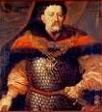







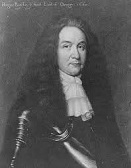











1667 In Jan. architect Christopher Wren receives a commission from the Corp. of London to rebuild all of London, whose fires are still smoldering 4 mo. after the Great Fire; after deciding to clone the design of filthy crowded Paris, his bosses approve widening of streets, along with new regs forbidding thatched roofs and requiring stone and masonry in place of wooden construction, but balk at tearing down private homes to make way for grandiose public boulevards and monuments; Wren's friend Robert Hooke is appointed surveyor by the London Corp. and works with him to rebuild the city, which features 50 new churches, causing a construction boom resulting in making MF-burned London one of the most modern cities in Europe - with patented wind tunnel technology? On Jan. 30 the Truce of Andrusovo (Andrussovo) ends the Thirteen Years' War between Russia and Poland (begun 1654); Jan II Casimir of Poland agrees to cede the borders areas stolen from Russia in 1619, incl. Little Russia (an area around Kiev), Smolensk, and Eastern Ukraine (left bank of the Dnieper River) to Tsar I Alexis of Russia; a full peace treaty is not agreed to until 1686; under the influence of Queen Ludwica, Jan III Sobieski (1624-96) is appointed CIC of the Polish army, and it's just a matter of time before he's wearing a crown? On Mar. 15 Paris creates a police force, La Lieutenance de Police, and installs reflecting candle lanterns on streets; in 1800 it is reorganized as the Prefecture de Police. Why is this man dancing? On May 22 Pope (since 1655) Alexander VII (b. 1599) dies in Rome after persuading Louis IX to restore Avignon to papal control and denounce the privilege of diplomatic residence, and on June 20 Juicy Roast Pig, er, Giulio Rospigliosi is elected Pope (#238) Clement IX (1600-69). George Villiers, 2nd duke of Buckingham, who had been kept down by his enemy, lord chancellor Earl of Clarendon embarrasses the king by fighting a duel in which he kills the earl of Shrewsbury while his wife the countess (Buckingham's paramour) watches disguised as a page; after a brief imprisonment Buckingham is released, and helps bring down Clarendon's govt. after the Four Days' War between the English and the Dutch is fought in July at the mouth of the Thames River, and the Dutch fleet under top Dutch Adm. Michiel Adriaenszoon de Ruyter (1607-76) breaks the chain in England's Medway River, reaches Chatham and captures the flagship Royal Charles, after which both sides withdraw, and Buckingham gets Clarendon blamed, getting him axed, banished to France for life, and prohibited from seeing his children or corresponding with anyone in Britain; Charles's secy. of state Henry Bennet, Earl of Arlington (1618-85) becomes chief minister (until 1674), and Charles selects four other ministers who along with Arlington form the Cabal ("secret doctrine", "intrigue") (Committee of Foreign Affairs) (until 1673) within the privy council (term taken from the Jewish Qabala, becoming its first use with a sinister connotation); the king's five ministers are named Clifford, Arlington, Buckingham, Ashley Cooper (later earl of Shaftesbury), and Lauderdale. On July 21 Dutch Dordrecht grand pensionary Johan de Witt negotiates a peace favorable to the United Provinces, the Peace (Treaty) of Breda is signed, ending the Second Anglo-Dutch War (begun 1664), with all territories restored, and England agreeing to the Dutch interpretation of the Navigation Acts; sovereignty over Suriname is transferred by the English to the Dutch - ever wonder about the people you went to school with? In July the Dutch leave Phnom Penh. On Sept. 9 dissolute slash mad Portuguese king Alfonso VI dismisses his highly capable who's-the-man gov. Luiz de Vasconcelos e Sousa, 3rd Count of Castelo Melhor (1636-1720), and soon afterward yields the throne to his younger brother Pedro II (1648-1706), who becomes regent (defender of the realm) on Sept. 23 (until 1683), after which he gets Alfonso's marriage annulled, marries the queen, and exiles the bum to the Azores, keeping him a prisoner at Sintra until death in 1683; Melhor goes into exile in Paris and London (until 1685). What's a Brooklyn style pizza? What are you, nuts? On Oct. 18 Brueckelen (Dutch "broken land") (Brooklyn) in New Amsterdam, er, New York is chartered by Gov. Richard Nicolls, consisting of "all the lots and plantations lying and being at the Gowanus, Bedford, Walle Bocht and Ferry" - where is the undercover DEA agent? In Oct. Jan III Sobieski defeats an army of 20K-30K Tartars and Cossacks led by Fietr Deroszenke and Girej Khan at the Battle of Podhajce (Podgaytsy). I'm going to eat all this? Not that much, slugger, this'll do it? Nonpayment of the dowry of Marie Theresa by Spain is used as an excuse by Louis XIV to lay claim on the Spanish royal family's personal estates in the Netherlands under the "droit de devolution", which gives ownership of a widow's or widower's property to the children while giving the widow or widower usufruct of the property, with daughters of the first marriage inheriting before sons of the second marriage; Louis declares war on Spain, beginning the War of Devolution (ends 1668), and invades Flanders and Hainault with an army led by Gen. Henri de la Tour d'Auvergne, Vicomte de Turenne (1611-75), who meets little resistance because the Rhineland states refuse to assist the HRE; the French use grenades for the first time; this war pops Louis' cherry, and for the next 50 years Europe is all about his ambitions? - the Sun King in him is let loose by 666 relief? The steal-from-the-rich-give-to-the-poor Bacon's Rebellion in the Va. colony, led by wealthy Nathaniel Bacon (1640-76) forces his cousin Gov. William Berkeley to flee. Mughal emperor Aurangzeb buys off Maratha leader Shivaji, giving him the title of rajah and allowing him to levy taxes. French minister Jean Baptiste Colbert doubles the duty on cloth. The Bahamas are granted to the proprietors of Carolina. Carlo Pallavicino (1630-88) becomes court kappelmeister in Dresden. English spy Aphra Behn returns to England, is never rewarded for her services, and is later jailed for debt, then begins a literary career, becoming the first prof. woman hacker, er, writer in England? The first French girls arrive in Quebec. Sir William Gates leads English colonists to Cape Fear in N. Am., then returns three years later to find them all disappeared without a trace, incl. the Corbett family; a cent. later, Daniel Boone and Mingo discover their descendants living in Indian sacred land? :) The Croatian town of Dubrovnik at the tip of S Dalmatia is destroyed by an earthquake, and later rebuilt in Baroque style, with yellow-tiled roofs. After using her clout with her hubby William Cavendish, "Mad Madge" Mary Cavendish, Duchess of Newcastle-upon-Tyne (1623-73) becomes the first woman admitted to the British Royal Society (next in 1945). The Nat. Observatory in Paris is founded by the French Academy. Jean Baptiste Colbert founds the Manufacture Royale des Meubles de la Couronne. The Worshipful Co. of Feltmakers is incorporated in London. The first ice cream eaten in England is served at Windsor Castle. Ye Olde Cheshire Cheese reopens at 145 Lee St. in London in a new bldg. Russian boyar Afanasy Ordin-Nashchyokin, whose shipyard on the Baltic was closed in 1661 by the Treaty of Cordis brings in Dutch experts and begins building warships at the confluence of the Oka and Volga Rivers, only to have the Cossacks capture them. Henry Howard, 6th Duke of Norfolk (1628-84) presents the Arundel(ian) Marbles, originally collected by his grandfather Thomas Howard, 2nd (21st) Earl of Arundel (1585-1646) to Oxford U. Architecture: Mexico City Cathedral (begun 1573) is finished. St. Peter's Square in Rome (begun 1656) is finished. The Champs-Elysees (Champs-Élysées) (Elysian Fields) in Paris is laid out by Andre Le Notre as an extention of the Tuileries Place Garden, which was built in 1564 and which Le Notre rebuilt for Louis XIV in 1664; originally the Grand Cours or Grand Promenade, it doesn't receive it modern name until 1709. Inventions: Robert Hooke of England and Christian Forner (Förner) of Weissenfels, Germany invent the Anemometer (wind speed gauge). Dutch painter Jan van der Heyden (1637-1712) devises a comprehensive street lighting scheme for Amsterdam, which is used until 1840, and adopted by many other towns. Abbe Jean Picard (1620-82) of France invents a micrometer for use with a telescope, and uses it to discover anomalies in the positions of stars, which are not explained until 1728. Science: German physician Johann Joachim Becher (1635-82) pub. a forerunner of the Phlogiston Theory, claiming that all bodies are composed of air, water, and three earths, terra lapida (stony), terra mercurialis (mercurial), and terra pinguis (fatty), and that in combustion the fatty earth is released, which later causes Joseph Priestley of England to call oxygen "dephlogisticated air" - close but no fat cigar? Robert Boyle proves that fresh air is necessary for respiration, and that an animal can be kept alive by artificial respiration using a bellows in a dog's trachea; his partner Robert Hooke shows that blood alteration in the lungs is the essential feature of respiration. Robert Hooke becomes the first to add red dye to alcohol in a thermometer, and sets the freezing point of water as zero. Science counts sheep in its sleep? On June 15 Jean-Baptiste Denis performs his second human blood transfusion in England from a lamb to teenaged, daft, improverished clergyman's helper Arthur Coga, who is paid 20 shillings to receive up to 12 oz. (350 ml) of blood in the hope that the life force of the docile creature will tame his madness; the following week Coga addresses the Royal Society in Latin, and Pepys reports "He is a little cracked in his head, though he speaks very reasonably"; he disappears before they can give him any more treatments. Cornish physician Richard Lower (1631-91) transfuses blood from one dog to another in Oxford, and observes that blood changes color when in contact with air - air lowers blood pressure? Italian astronomer Geminiano Montanari (1633-87) first records the variability of "Demon Star" Algol (Beta Persei) (an eclipsing binary). Scottish physician Sir Robert Sibbald (1641-1722) and Sir Andrew Balfour found the first botanical garden in Edinburgh, Scotland. Danish scientist Steeno (Niels Steensen) (1638-87) of Copenhagen, who discovered the parotid salivary duct while studying anatomy in Amsterdam, then became court physician to grand duke Ferdinand II of Florence in 1665 publicly dissects a shark's head and proves that its mouth is full of teeth, not serpent tongues, then reveals that stones found in Malta are fossils of ancient shark teeth, founding the modern study of geology; he then advances the theory that land formations such as seabeds evolve via natural processes - living in the moment, priceless? The Cassiopeia A supernova, the youngest known in the Milky Way galaxy blows up (as seen from Earth). Nonfiction: Adrien Auzout (1622-91), Traite du Micrometre ou Maniere Exacte pour Prendre le Diametre des Planates et la Distance entre les Petites Etoiles (Treatise on the Micrometer or the Exact Method for Measuring the Diameter of the Planets and the Distance between the Little Stars"); discusses his improvements to the telescope, incl. his independent invention of the micrometer. Johann Jachim Becher (1635-82), Physical Education; first pub. of the Phlogiston Theory. William Cavendish, 1st duke of Newcastle-upon-Tyne (1592-1676), A New Method and Extraordinary Invention to Dress Horses and Work Them According to Nature. James Gregory (1638-75), Vera Circuli et Hyperbolae Quadratura; shows that the areas of the circle and hyperbola can be obtained from an infinite convergent series, and speculates on the impossibility of the quadrature of the circle and the existence of transcendental numbers; he also pub. infinite series expansions of trig functions; reprinted in 1668 with the appendix Geometriae Pars, with methods on calculating the volumes of solids of revolution. Guillaume Lamoignon (1617-77), The Code Louis. F.E. de Mezeray (1610-83), Abrege Chronologique. Thomas Sprat, Early History of the Royal Society. Gottfried Wilhelm von Leibniz (1646-1716), Nova Methodus Discendique Juris. Samuel von Pufendorf (1632-94), Of the Law of Nature and Nations; De Statu Republicae Germanicae (anti-Hapsburg). Steeno (1638-87), Dissected Head of a Dog Shark (Canis Carcariae Dissectum Caput); concludes that the large tongue-shaped objects found in rock strata in Malta are the teeth of ancient sharks whose remains were buried beneath the seabed and later raised out of the water by changes in the Earth's crust, thereby claiming that fossils are you know what and it's done all the time in Denmark?; meanwhile live shark teeth are not serpent tongues - thanks, Rubbermaid? Thomas Willis (1621-75), Pathologicae Cerebri et Nervosi Generis Specimen (Pathology of the Brain); on the pathology and neurophysiology of the brain, developing a new theory of the cause of epilepsy; contains the first account of the effects of the late stage of syphilis on the brain. Art: Jan Vermeer 1632-75, Girl With a Red Hat. Plays: Roger Boyle, 1st Earl of Orrery (1621-79), The Black Prince (Theatre Royal, Drury Lane, London) (Oct. 19); staged by the King's Co.; helps found the genre of heroic drama; the opening is attended by Charles II, and the 2nd and 3rd performances are attended by Samuel Pepys; stars Edward Kynaston as the Black Prince, Michael Mohun as Edward III, William Wintershall as King John, Charles Hart as Lord Delaware, Nicholas Burt as Count Guesselin, William Cartrwight as Lord Latimer, Katherine Corey as Cleorin, Nell Gwyn as Alizia Pearce, and Rebecca Marshall as Plantagent. Sir William Davenant (1606-68) and John Dryden (1631-1700), The Tempest, or The Enchanted Island (comedy) (Duke's Theatre, Lincoln's Inn Fields, London) (Nov. 7); based on William Shakespeare's "The Tempest". William Cavendish, 1st Duke of Newcastle-upon-Tyne (1592-1676), The Humorous Lovers. John Dryden (1631-1700), Secret Love, or The Maiden Queen; (Theatre Royal, Drury Lane, London) (Mar. 2); opening night features Charles II, the future James II, and Samuel Pepys in the audience; Nell Gwyn plays Florimel; Sir Martin Mar-All, or The Feign'd Innocence (Aug.) (London, Lincoln's Inn Fields); adaptation of Moliere's "L'Atourdi" as tr. by William Cavendish, 1st duke of Newcastle-upon-Tyne (1592-1676). Jean Baptiste Racine (1639-99), Andromaque (Andromache) (tragedy) (Nov. 7) (Hotel de Bourgogne, Paris); the first of his seven great Greek-Roman-based tragedies in rhymed Alexandrine verse (no spontaneous emotion) (Britannicus, Berenice, Bajazet, Mithridate, Iphigenie, Phedre) (ends 1677). Poetry: John Dryden (1631-1700), Annus Mirabilis; the "Wonderful Year" 1666, incl. the Dutch War and Great Fire of London - the raspberry for crypto-MF gobbledygook? John Milton (1608-74), Paradise Lost (10 vols.); 12-vol. 2nd ed. 1674; his magnum opus, composed in1658-65 after going blind in 1652, and finished during the Great Plague at Milton's Cottage in Chalfont St. Giles, Buckinghamshire; the Biblical story of the Fall of Man incl. the temptation of Adam and Eve by Satan and their expulsion from the Garden of Eden; Lucifer's capital is called Pandemonium; "To reign is worth ambition, though in Hell./ Better to reign in Hell than serve in Heaven" (Lucifer); "Their maker, or their making, or their Fate;/ As if Predestination over-rul'd/ Their will, dispos'd by absolute Deree/ Or high foreknowledge; they themselves decreed/ Their own revolt; not It if I foreknew,/ Foreknowledge had no inference on their fault;/ Which had no less prov'd certain unforeknown"; "I formed them free, and free they must remain,/ Till they enthrall themselves I else must change/ Their nature, and revoke the high Decree/ Unchangeable, Eternal, which ordained/ Their freedom; they themselves ordained their fall"; After being sent to warn Adam of Satan's plan, Adam quizzes archangel Raphael on Creation, and gets the reply "The rest from Man or Angel the great Architect did wisely conceal,/ and not divulge His secrets to be scann'd by them who ought rather admire"; after Eve puts him up to it, Adam begs God for forgiveness, causing Archangel Michael to show him a vision revealing everything that will happen to mankind until the Great Flood, ending with mankind's redemption from original sin by Jesus Christ, after which Adam and Eve are cast out of Eden, and Michael utters the soundbyte that Adam may find "a paradise within thee, happier far"; sells 1.3K copies in 18 mo., helping make Milton the #1 English poet of all time - red anti-MF ribbon for astoundingly good sense of timing? Novels: Andrew Marvell (1621-78), Last Instructions to a Painter; satire against corruption of the monarchy. Madeleine de Scudery (1607-1701), Mathilde. Births: Italian Baroque painter Il Lissandrino (Alessandro Magnasco) (d. 1749) on Feb. 4 in Genoa; known for his paintings of synagogues. German "Abblasen" composer Gottfried Reiche (d. 1734) on Feb. 5 in Weissenfels; chief trumpeter in Leipzig of J.S. Bach in 1723-34. Italian art patron (last scion of the House of Medici) Anna Maria Luisa de' Medici (b. 1667) on Feb. 18 in Florence; only daughter of Cosimo III de'Medici and marguerite Louise d'Orleans (niece of Louis XIII); wife of Johann Wilhelm II (1658-1716). French Regence-style (pre-Rococo) architect Germain Boffrand (d. 1754) on May 16 in Nantes; pupil of Jules Hardouin-Mansart. German printmaker Jacob Christoph Le Blon (d. 1741) on May 23 in Frankfurt am Main. French De Moivre's Formula mathematician and chess player (Huguenot) Abraham de Moivre (d. 1754) on May 26 in Vitry-le-Francois, Champagne; emigrates to England in 1687. Swiss mathematician (calculus contributor) Jean Bernoulli (Bernouilli) (d. 1748) on Aug. 6 in Basel; brother of Jacques Bernoulli (1654-1705). Italian mathematician (Jesuit priest) Girolamo Saccheri (d. 1733) on Sept. 5 in Sanremo; one of math's great also-rans? Irish "Gulliver's Travels" cleric-writer-satirist Jonathan Swift (d. 1745) on Nov. 30 in No. 8, Hoey's Court, Dublin; AKA Lemuel Gulliver, Isaac Bickerstaff, M.B. Drapier, Presto; Irish father, English mother; grows up poor and bitter, and suffers from Meunier's Disease; educated at Trinity College, Dublin. English "The Busybody" dramatist-poet-actress Susanna Centlivre (Carroll) (nee Freeman) (d. 1723) in Nov. in Holbeach (near Spalding), Lincolnshire. English natural philosopher-historian-theologian (Arian) William Whiston (d. 1752) on Dec. 9 in Norton (near Twycross), Leicestershire; educated at Clare College, Cambridge U.; vicar of Lowestoft (1698-1701); Lucasian prof. of math at Cambridge (1703-). English "Sir Anthony Love" actress Susanna Verbruggen (Mountfort) (nee Percival) (d. 1703); known for playing men. English gardener Thomas Fairchild (d. 1729). Austrian portraitist Johann Kupetzky (d. 1740) in Pezinok (Bosing) (near Pressburg). German "The Beggar's Opera" composer (in England) Johann Christoph Pepusch (d. 1752) in Berlin; emigrates to England in 1700. Deaths: English Cavalier-turned-Puritan poet-hymnist George Wither (b. 1588) on May 2. English royalist Thomas Wentworth, earl of Cleveland (b. 1591) on Mar. 25; his estates have become kaput and his earldom goes extinct - it went and ain't worth a dime? Swiss Baroque sculptor-architect Francesco Borromini (b. 1599) on Aug. 3 in Rome (suicide). Spanish artist-architect Alonso Cano (b. 1601) on Sept. 3; refuses a crucifix on his deathbed from a priest because he is a converted Jew. French playwright Georges de Scudery (b. 1601). English royalist Edward Somerset, 2nd marquess of Worcester (b. 1602) on Apr. 3 near London; regained his estates but failed to obtain the dukedom of Somerset as Charles II promised. French queen (mother of Louis XIV) Anne of Austria (b. 1602). Ethiopian emperor (1632-67) Fasilides (b. 1603) on Oct. 18 in Azazo; his 7-y.-o. son Isur is crushed by the crowd at his funeral, and is buried with him. Anglican bishop Jeremy Taylor (b. 1613) on Aug. 13 in Lisburn, Country Antrim, Ireland. German composer Johann Jakob Froberger (b. 1616) on May 6/7 in Hericourt; his keyboard suites are pub. in 1693, arranged in an order that sets a standard: allemande, courante, sarabande, gigue. English poet Abraham Cowley (b. 1618) on July 28 in Chertsey, Surrey; buried in Westminster Abbey. Swiss philologist-theologican Johann Heinrich Hottinger (b. 1620) on June 5 in Zurich (drowns with three of his children in the Limmat River after upsetting his boat). Dutch painter Gabriel Metsu (b. 1629) on Oct. 21 in Amsterdam. French inventor Jean de Thevenot (b. 1633) on Nov. 28 in Miyana, India.






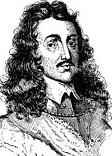




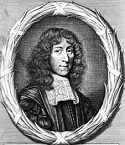

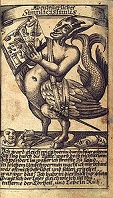

1668 In Jan. Louis XIV signs a partition treaty with the HRE, causing the United Provinces of the Netherlands, which fears French invasion to form the Triple Alliance (Alliance of The Hague) with Sweden and former enemy England against France on Jan. 23; the French, led by the Great Conde overrun Franche-Comte in Feb.; on May 2 the Treaty of Aix-la-Chappelle ends the War of Devolution (begun 1667), and Franche-Comte is returned to Spain after dismantling the fortresses, in return for 12 fortified towns (Lille, Tournay, Oudenarde, et al.) on the border of the Spanish Netherlands in Flanders; the question of succession is deferred. On Feb. 13 the Treaty of Lisbon between Queeen Mariana of Austria (2nd wife of late Philip IV) in the name of her young son Carlos II of Spain, and prince-regent Peter II of Portugal, with the mediation of Edward Montagu, 1st Earl of Sandwich sees Spain recognize Portugal's new ruling dynasty, the House of Braganza, ending the Portuguese Restoration War (begun 1640). On Apr. 7 Sir William Davenant (b. 1606) dies, and John Dryden (1631-1700) becomes poet laureate of England in 1670. On Apr. 15 Pope Clement IX declares blessed St. Rose of Lima (1586-1617), who becomes the first Am. saint. In Apr. Charles II begins his affair with actress Nell Gwyn after sitting in the next box to each other at a performance of George Etherege's "She Wou'd if She Could" at Lincoln's Inn Fields. On Sept. 16 Polish king (since 1648) Jan II Casimir abdicates, after which he moves to France and rejoins the Jesuits, becoming abbot of St. Martin's monastery in Nevers; Jan III Sobieski leads the Polish army against the Turks. The Treaty of Lisbon guarantees Spanish recognition of Portugal. Louis XIV and HRE Leopold I sign a treaty concerning future partition of Spanish realms. A fire set by arsonists in Edo, Japan burns for 45 days. Michigan (Mich.) is settled by French missionary Jacques Marquette (1637-75) at Sault Ste. Marie. The govt. of Maine passes to Mass. Richard Nicolls departs, and Kent-born Francis Lovelace (1621-75) (brother of Cavalier poet Richard Lovelace) becomes New York Colony gov. #2 (until 1673). Charles II grants the British East India Co. control of his new town of Bombay in exchange for an annual rent of 10 English pounds; they move their HQ there from Surat in 1708. The Swedish Nat. Bank is founded, becoming the oldest central bank in the world by modern times. Queen Christina pub. a Letter on Religious Tolerance, and a Manifesto in Defense of the Jews in Rome while staying at the home of a Jew named Texeira. German-Danish organist-composer Dietrich Buxtehude (1637-1707) becomes organist at St. Mary's in Lubeck. Foot binding in China (forbidden in 1638, 1645, and 1662) is finally restricted to Chinese only. La Purga sees the Roman Catholic Church brand four Illuminati scientists with the symbol of the cross, execute them, then leave their bodies in public locations around Rome as a warning to other scientists :) - Dan Brown, Angels and Demons (2000). Architecture: The Oder-Spree Canal (begun 1661) is finished. The Chateau de Villette near Versailles (25 mi. NW of Paris), designed by Francois Mansart (1598-1666) for the Count of Aufflay, with gardens designed by Le Notre is finished, becoming known as the Petite Versailles - Sir Leigh Teabing? The Sheldonian Theatre in Oxford, England (begun 1664) is finished. Inventions: Isaac Newton invents the Newtonian Reflecting Telescope, which is a great improvement, reducing distortion. Science: Dr. Jean Baptiste Denis performs his third human blood transfusion on a wife beater in France in Jan. using a sheep, and when he dies the doctor is tried for murder and acquitted, causing blood transfusions to be banned in France - enough to make me a Jehovah's Witness? Cornish chemist John Mayow (1643-79) of England pub. a tract on respiration, demonstrating that the volume of air is reduced in respiration, attributing it to "spiritus nitro-aereus", which later turns out to be oxygen. Nonfiction: Sir Josiah Child (1630-99), Brief Observations Concerning Trade and the Interest of Money (London); advocates free trade as long as the govt. keeps the interest rate low, with the reservation that the mother country has the sole right of trade with her colonies. John Dryden (1631-1700), Essay of Dramatick Poesie; makes him the #1 English lit. critic. Joseph Glanvill (1636-80), Plus Ultra; or, The Progress and Advancement of Knowledge since the Days of Aristotle; appreciation of the scientific method by a guy who believes in witchcraft? Robert Hooke (1635-1703), Discourse on Earthquakes; pub. posth. in 1705. Stanislaw Lubieniecki (1623-75), Theatrum Cometicum (Theater of Comets); displays the paths of 415 comets from the Deluge to 1665; the Moon crater Lubiniezky is later named after him. Pierre de Lune, Le Nouveau et Parfait Cuisinier. Jean Mabillon (1632-1707), Lives of the Benedictine Saints (9 vols.) (1668-1701). John Mayow (1643-79), De Sal-Nitro et Spiritu Nitro-Aero; reprinted in 1674 with other works. Nicholas Mercator (1620-87), Logarithmo-Technica; on logarithms. Henry More (1614-87), Divine Dialogues. William Penn (1644-1718), The Sandy Foundation Shaken; or, Those So Generally Believed and Applauded Doctrines of One God, Subsisting in Three Distinct and Separate Persons, The Impossibility of God's Pardoning Sinners without a Plenary Satisfaction, The Justification of Impure Persons by an Imputative Righteousness, Refuted; questions the Trinity, getting him thrown into the Tower of London, giving him time to write his most popular books - hey Delilah I know the times are hard, but some day I'll pay the bills with this guitar? Fabian Stedman (1640-1713), Tintinnalogia; first work on the subject of change ringing of bells. Bishop John Wilkins (1614-72), An Essay Towards a Real Character and a Philosophical Language; proposes an internat. language for scholars along with a decimal system of measure. Music: Thomas Tomkins (1572-1656), Musica Deo Sacra (posth.). Art: Gabriel van de Velde, Golfers on the Ice. Rembrandt van Rijn (1606-69), Return of the Prodigal Son. Salvator Rosa (1615-73), Apparition of the Spirit of Samuel to Saul. Jan Vermeer (1632-75), The Geographer; The Astronomer. Plays: Mary Cavendish, Duchess of Newcastle-upon-Tyne (1623-73), Plays Never Before Plublished. Sir William Davenant (1606-68), The Man's the Master (comedy); dies after its debut from 40+-y.-o. syphilis. John Dryden (1631-1700), An Evening's Love; Or, the Mock Astrologer; Ladies a la Mode; Sir Martin Mar-All (comedy). George Etherege (1636-92), She Wou'd If She Cou'd (comedy) (Lincoln's Inn Fields); another hit; too bad, he leaves for Constantinople as secy. of English ambassador Sir Daniel Harvey until 1671, and doesn't debut another play until 1676. Moliere (1622-73), L'Avare (The Miser); Amphitryon; George Dandin ou le Mari Confondu (a wise fool). Jean Baptiste Racine (1639-99), Les Plaideurs (The Litigants); comedy based on Aristophanes' "The Wasps". Sir Charles Sedley (1639-1701), The Mulberry-Garden (first play); comedy based on Moliere's "L'Ecole des Maris". Thomas Shadwell (1642-92), The Sullen Lovers, or The Impertinents; based on Moliere's "Les Facheux". Poetry: Jean de La Fontaine (1621-95), Fables Choisies Mises En Vers (La Fontaine Fables); 2nd ed. 1678. Christian Weise (1642-1708), Der Grunenden Jugend Uberflussige Gedancken; incl. his 1st drama "Die Triumphirende Keuschheit". Births: French-Canadian explorer Jean Baptist Bissot, Sieur de Vincennes (d. 1719) on Jan. 19 in Quebec; father of Francois-Marie Bissot, sieur de Vincennes (1700-36); brother-in-law of Louis Joliet. Italian Capuchin monk (St.) Crispin of Viterbo (Peter Fioretti) (d. 1750) on May 19 in Viterbo. Italian "Scienza Nuova" philosopher-historian-jurist Giovan Battista (Giambattista) Vico (d. 1744) on June 23 in Naples; inspiration for Benedetto Croce. French war secy. (1691-1701) Louis Francois Marie le Tellier (d. 1701) on June 23 in Barbezieux-Saint-Hilaire (Charentes); 3rd son of Francois-Michel le Tellier (1641-91). German Wettin elector of Saxony (1691-4) Johann Georg (John George) IV (d. 1694) on Oct. 18 in Dresden; eldest son of Johann Georg III (1647-91) and Anna Sophie of Denmark. French Baroque composer-organist Francois Couperin "the Great" (d. 1733) on Nov. 10 in Paris; inherits the post of organist of the Church of Saint-Gervais from his father, and passes it to his cousin Nicolas Couperin. Austrian Hofburg Palace architect Johann Lukas von Hildebrandt (d. 1745) on Nov. 14 in Genoa, Italy; German father, Italian mother. Italian poet-librettist-writer Apostolo Zeno (d. 1750) on Dec. 11 in Venice. Dutch humanist physician-botanist ("Founder of the Modern Academic Hospital and Clinical Teaching") Herman (Hermann) Boerhaave (d. 1738) on Dec. 31 in Voorhout (near Leiden); educated at the U. of Leiden. Prussian queen Sophie Charlotte (Fr. "little womanly"), Electress of Brandenburg (d. 1705). English horticulturist John Laurence (d. 1732). English Baroque St. Paul's Deptford architect Thomas Archer (d. 1743) in Tanworth-in-Arden, Warwickshire; educated at Oxford U. French "Turcaret" novelist-dramatist Alain-Rene (Alain-René) Lesage (Le Sage) (d. 1747) in Sarzeau (Morbihan). Scottish surgeon Charles Maitland (d. 1748). Deaths: Am. colonial printer Stephen Day (b. 1594). English soldier Sir William Waller (b. 1597) on Sept. 19. German Jesuit theologian Hermann Busenbaum (b. 1600) on Jan. 31 English military leader Algernon Percy, 10th earl of Northumberland (b. 1602) on Oct. 13 in Petworth. German Latinist Jakob Balde (b. 1604) on Aug. 9 in Neuburg an der Donau. German scientist Johann Rudolf Glauber (b. 1604). English poet laureate Sir William Davenant (b. 1606) on Apr. 7 in London (syphilis); buried in Westminster Abbey. Dutch painter Philips Wouwerman (b. 1619).






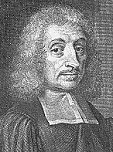
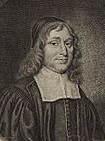



1669 There is a cholera outbreak in China. On Feb. 23 (Shrove Tuesday) Samuel Peeping, er, Peys kiss the publicly displayed corpse of "Kiss Me Kate" Catherine of Valois (1401-37) (wife of Henry V of Agincourt Fame) in Westminster Abbey, and writes in his dairy "On Shrove Tuesday 1669, I to the Abbey went, and by favour did see the body of Queen Katherine of Valois, and had the upper part of the body in my hands, and I did kiss her mouth, reflecting upon it I did kiss a Queen: and this my birthday and I thirty-six years old and I did kiss a Queen" - live the Shakespeare fantasy? In Mar. after being criticized for declaring martial law and housing troops with civilians, James Butler is removed as lt.-gov. of Ireland, but he's still in with kingy, and on Aug. 4 becomes chancellor of Oxford U. In Mar. John Locke's Fundamental Constitutions for Carolina (the area between Va. and Fla.) are approved, providing for a mixed liberal-feudal regime, with the Church of England officially established but dissenters given rights, low property requirements for voting, and secret ballots, and South Carolina (S.C.) is founded; in 1670 English settlers from Barbados arrive, followed by French Huguenots - you want to clean toilets, be my guest? On May 31 Samuel Pepys makes the last entry in his 6-vol. diary (begun 1660): "And thus ends all that I doubt I shall ever be able to do with my own eyes in the keeping of my Journal, I being not able to do it any longer, having done now so long as to undo my eyes almost every time that I take a pen in my hand"; the diary is not discovered for more than a century, among books bequeathed to Cambridge U. The earliest known case of clone discrimination? On July 1 French war secy. Francois-Michel le Tellier (1641-91) writes the first known letter regarding the Man in the Iron Mask, a mysterious prisoner who is arrested in Dunkirk and sent to the prison of Pignerol, France near Turin wearing a velvet mask, with two musketeers always at his side to kill him if he unmasks; the warden M. Saint-Mars is instructed to threaten him with death if he opens his mouth on any subject other than day-to-day needs; the prisoner is put in the Bastille in 1679, with Saint-Mars as its warden, and stays there until his death in 1707. In July after visiting Louis XIV in Versailles and getting banished for refusing to bow to him, Soleiman Agha, ambassador of Ottoman sultan Mehmed IV visits Paris bringing a large quantity of coffee beans, serving coffee to guests and donating beans to the royal court, establishing the custom of coffee drinking in Paris by the time he leaves in May 1670, along with an enthusiasm for all things Oriental incl. turbans, caftans, cushions, and carpets. On Sept. 23 Zagreb U. is founded by decree of HRE Leopold I as the Jesuit Academy of the Royal Free City of Zagreb until the Jesuits are dissolved by Pope Clement XIV in 1773, after which in 1776 Empress Maria Theresa founds the Royal Academy of Science, and Austrian emperor Franz Joseph establishes the U. of Zagreb in 1869, becoming the largest Croatian univ. and oldest continuously operating univ. in C Europe S of Vienna and all of SE Europe. On Sept. 26 the Turks gain control of Crete from Venice (their last colonial possession), despite help from France after Venetian-Cretan engineer Andrea Barozzi gives the Turks the plans for the walls of Chandax (Heraklion) (strongest fort in the E Mediterranean) in 1667 and they still hold out for two years, ending the Fifth Venetian-Turkish War (begun 1645). In Oct. Isaac Barrow resigns his chair as Lucasian Prof. of Mathematics in favor of the much more capable Isaac Newton after the latter announces his ultra-liberating mathematical tool of Calculus, circulating the ms. De Analysi per Eequationes Numero Terminorum Infinitas (pub. 1711). Michael Korybut Wisniowiecki (1640-73) of Lithuania is elected king of Poland (until 1673), going on to watch his kingdom get torn apart by French and Hapsburg factions. On Dec. 9 pope (since 1667) Clement IX (b. 1600) dies after proclaiming a 10-year Peace of the Church (ends 1679) after the intercession of sensitive French genius Blaise Pascal (1623-62), allowing predestinationist Jansenism to exist within the Church, reversing the 1653 ruling that it is heretical. The last assembly of the Hanseatic League is held, with only six towns sending reps., after which it goes formally dissolves next year. Aurangzeb officially bans the Hindu religion in India. In Jamestown, Va. a master is permitted to kill a slave while inflicting punishment - the start of white cops in black ghettos? The Ainu people begin the Shakushain Revolt against the Japanese on Hokkaido Island (ends 1672). Ethiopian emperor Yohannes I expels all Roman Catholics. Rene Robert Cavalier, Sieur de La Salle explores the Great Lakes region, claiming all of Ohio for France; the French control all of Louisiana (La.) Territory until 1762. The first French trading station in India opens. The first tea is imported to Britain from India by the East India Co. Mt. Etna in Sicily erupts, and a 1-mi.-wide 15-mi.-long tongue of lava overflows the walls of Catania, swallowing up the homes of over 27K people, killing 20K and partially filling the harbor. The Spanish expel the Jews from the city of Oran. A royal patent for founding the Royal Academy of Music, soon known as the Academie (Académie) Royale des Operas (Paris Opera) is granted to Pierre Perrin (1620-75). Wiltwyck in New York is renamed Kingston after the English family seat of New York colonial gov. Francis Lovelace (1621-75), younger brother of Cavalier poet Richard Lovelace. A member of the Rottweil town council is forced to resign for not treating his Rottweiler dog properly. Margaret Askew, whose first hubby Thomas Fell fell, er, died in 1568, marries Quaker founder George Fox - you make me quake real good? Austrian Discalced (shoeless) Augustinian monk Abraham a Sancta Clara (1644-1709) begins preaching in Vienna, going on to be appointed imperial court preacher by HRE Leopold I in 1677. Architecture: Louis Le Vau begins remodeling Versailles. St. Mary's Whitechapel (Episcopal) Church is founded. Old South Church is founded in Boston, Mass. on the site where Judge Samuel Sewall publicly confessed his error in presiding over the witchcraft trials in Salem; Benjamin Franklin is later baptized here - call yourself crazy if you can't follow the rules? Science: Danish scientist Erasmus Bartholin (1625-98) pub. the first observations of double refraction of light in Iceland spar crystals. In 1669 alchemist Hennig Brand (Brandt) (1630-1710) of Hamburg, Germany discovers Phosphorus (P) (#15) in distilled human urine, becoming the first new element discovered since ancient times, launching the chain of events leading to the Periodic Table - he wasn't kidding about his burning urination? Marcello Malpighi studies silkworms. Steeno observes that corresponding interfacial angles in quartz crystals are always the same, becoming known as the First Law of Crystallography - Sterno, Urine, 69, all in the same year? English naturalist John Ray (1627-1705) pub. results of experiments on trees, showing that sap ascends through the wood. Nonfiction: Antoine Arnauld (1612-94), Le Perpetuite de la Foi; in collaboration with Nicole de Malebranche. Erasmus Bartholin (1625-98), Experimenta Crystalli Islandici Disdiaclastici quibus Mira & Insolita Refractio Detegitur (Experiments with the Double Refracting Iceland Crystal Which Led to the Discovery of a Marvelous and Strange Refraction). Edmund Castell, Lexicon Heptaglotton. John Eliot (1604-90), Indian Primer; catechistic exercises to aid converted Algonquian Indians. Matthew Locke (1621-77), The Treasury of Musick. Richard Lower (1631-91), Tractatus de Corde; first Western blood transfusion work. Nathaniel Morton, New England's Memorial. William Penn (1644-1718), No Cross, No Crown. Matthew Poole (1624-79), Synopsis Criticorum (5 vols.) (1669-76); summarizes the views of 150 Bible critics. Jan Swammerdam (1637-80), History of the Insects. Art: Jan Vermeer (1632-75), Young Woman Seated at the Spinet (Virginals) (1669-70); The Lacemaker (1669-70). Plays: John Dryden (1631-1700), The Wild Gallant (comedy). Moliere (1622-73), Monsieur de Pourceaugnac. Jean Baptiste Racine (1639-99), Britannicus (tragedy). Poetry: Nicolas Boileau-Despreaux (1636-1711), Epitres; satirical poems. Births: Danish anatomist Jacob (Jakob) Benignus (Jacques-Benigne) Winslow (d. 1760) on Apr. 17 in Odense; student of Guichard Joseph Duverney; works for Caspar Bartholin the Younger, then converts to Roman Catholicism and becomes a French citzen, renaming himself after Bishop Jacques-Benigne Bossuet (1627-1704). Danish physician-anatomist Jakob Benignus Winslow (d. 1760) on Apr. 27 in Odense. Indian Maratha navy CIC Adm. Kanhoji Angre (Conajee Angria) (d. 1729) in Aug. in Angarwadi (6 mi. from Pune), Maharashtra. Austrian field marshal Count Wirich Philipp von Daun (d. 1741) on Oct. 19 in Vienna; father of Leoplod Josef Graf von Daun (1705-66). Am. silversmith-soldier Edward Winslow Jr. (d. 1753) on Nov. 1 in Boston, Mass.; eldest son of Edward Winslow Jr. (1635-82) and Elizabeth Hutchinson (1639-1728); grandson of John Winslow (1597-1674) and Mary Chilton (1607-79); husband of Hannah Moody (1672-1711), Elizabeth Pemberton (1691-1712) and Susanna Layman (1688-1712); fathers 11 children; ancestor of Elliot Richardson and Robert Lowell (and TLW?). British statesman Charles Howard, 3rd Earl of Carlisle (d. 1738). Italian composer Giovanni Carlo Maria Clari (d. 1745). English clergyman Edmund Gibson (d. 1748). Deaths: Greek theologian (keeper of the Vatican Library since 1661) Leo Allatius (b. 1586) on Jan. 19 in Rome, Italy. English poet (bishop of Chichester) Henry King (b. 1592). Italian painter-architect Pietro da Cortona (b. 1596) on May 16 in Rome. Am. Puritan minister Richard Mather (b. 1596) on Apr. 22 in Dorchester, Mass. Italian pope (1667-9) Clement IX (b. 1600) on Dec. 9. English Puritan writer Willam Prynne (b. 1600) on Oct. 24 in London; writes 200 books and pamphlets. German satirist Johann Michael Moscherosch (b. 1601). German Calvinist pietist Johannes Coccejus (b. 1603). Dutch painter Rembrandt van Rijn (b. 1606) on Oct. 4 in Amsterdam; produced 600 paintings, incl. 100 self-portraits from the 1620s to his last years, but dies broke. Dutch architect Pieter Post (b. 1608) on May 8; designed the Huis ten Bosch in The Hague. English/Scottish queen Henrietta Maria (b. 1609); Jacques Bossuet delivers a famous Funeral Oration on Henrietta Maria. English poet Sir John Denham (b. 1615). Dutch adm. Willem van der Zaan (b. 1621) on Mar. 17 off Cape Tres Forcas, Algiers (KIA). Italian composer Marc' Antonio Cesti (b. 1623) on Oct. 14. Dutch (Flemish) philosopher Arnold Geulincx (b. 1624) in Nov.; dies after trying to refine Cartesian philosophy, coming up with the dictums "Ita est, ergo ita sit" (It exists, therefore it is so), and "Ubi nihil vales, ibi nihil velis" (Where you are worth nothing, there you should want nothing), making a fan of Irish novelist Samuel Beckett (1906-89), who quotes him in his novel "Molloy" (1950).